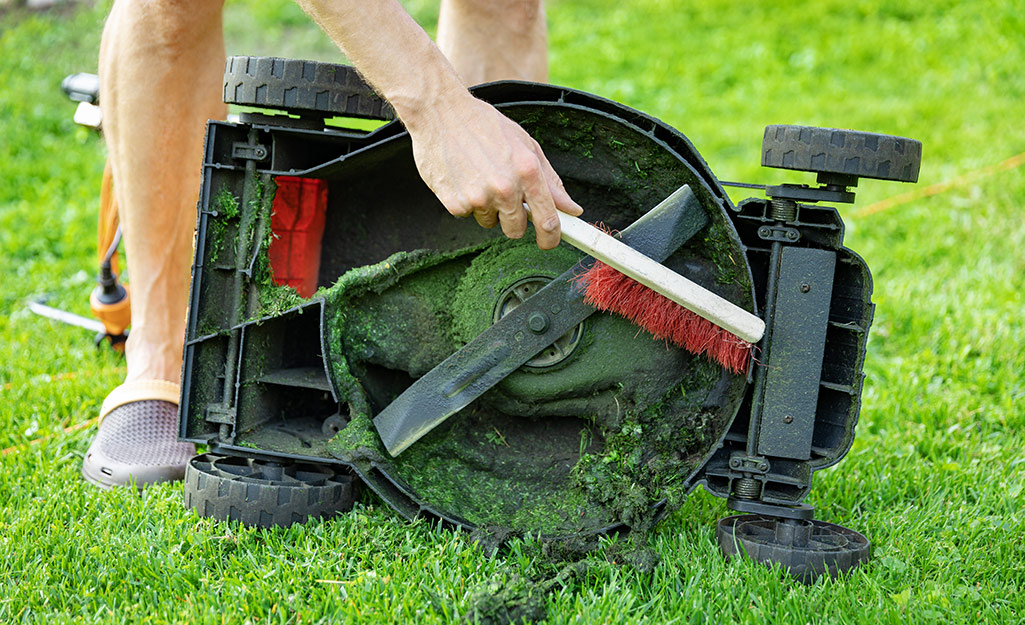
How often to sharpen lawn mower blades
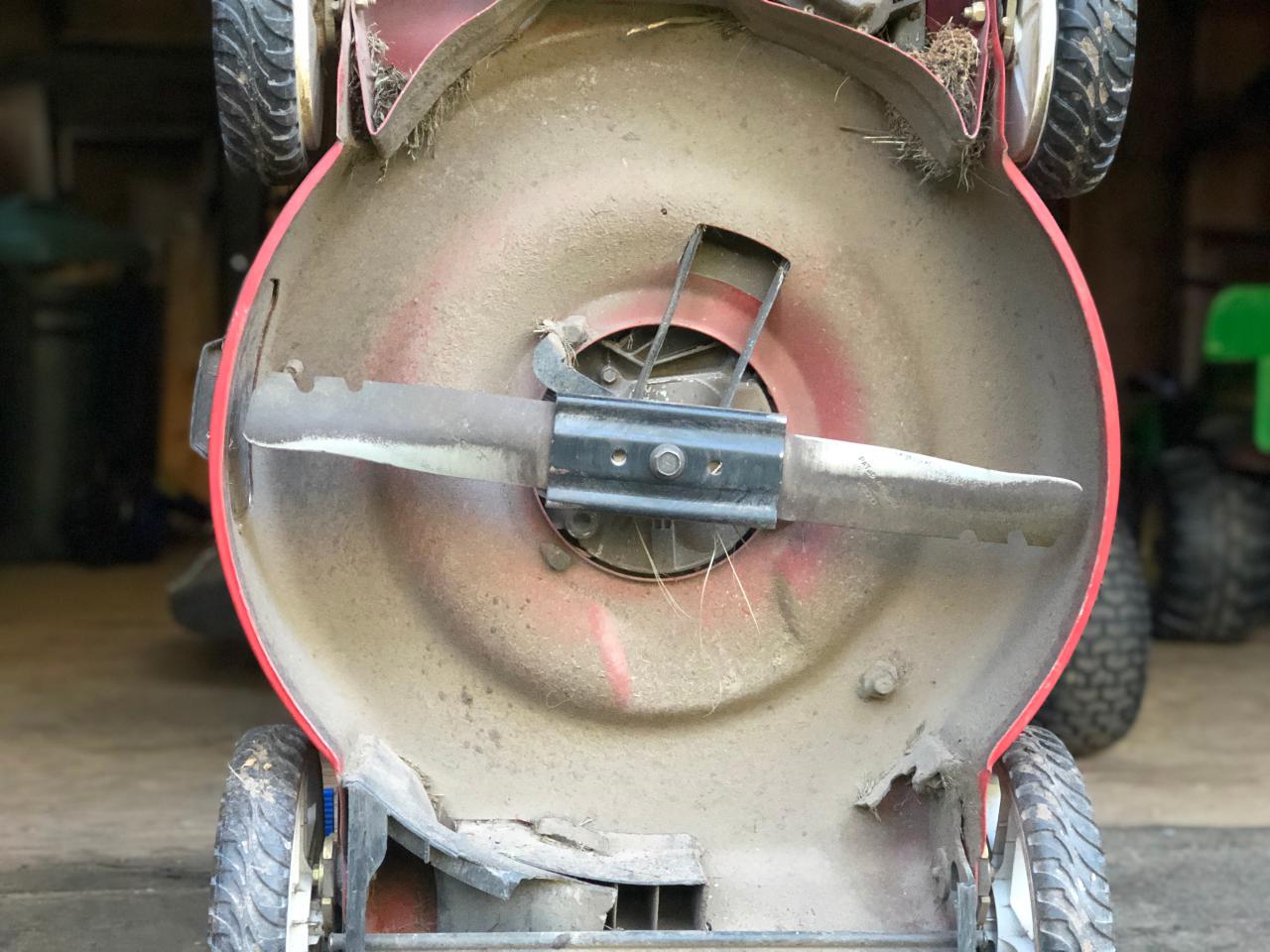
In the realm of lawn care, a well-maintained lawn mower stands as a trusty companion, tirelessly battling overgrown grass and maintaining pristine green carpets. However, even these stalwart machines can fall victim to the passage of time, their once-sharp blades becoming dull and ineffective.
Dull lawn mower blades can wreak havoc on your lawn, leaving behind uneven cuts, torn grass blades, and increased mowing time. They can also put a strain on your mower’s engine, leading to reduced efficiency and potential damage.
Fear not, fellow lawn care enthusiasts! This comprehensive guide will equip you with the knowledge and tools to keep your lawn mower blades sharp and your lawn healthy.
Understanding the Importance of Sharp Blades
Imagine your lawn mower blades as tiny scissors. Just as dull scissors struggle to cut paper cleanly, dull lawn mower blades struggle to slice through grass blades. Instead, they tear and pull, leaving behind ragged edges and an unhealthy lawn.
Sharp blades, on the other hand, glide through grass like a hot knife through butter. They create clean cuts that promote healthy growth, reduce the risk of lawn diseases, and make mowing a breeze.
Recommended Sharpening Frequency: A Balancing Act
The frequency with which you should sharpen your lawn mower blades depends on a variety of factors, including lawn size, grass type, mowing frequency, and the presence of obstacles. As a general rule of thumb, aim to sharpen your blades 2-3 times per mowing season.
For smaller lawns with less frequent mowing, you may be able to get away with sharpening once a season. However, for larger lawns, tougher grasses, or frequent mowing, more frequent sharpening may be necessary.
Signs of Dull Blades: A Call to Action
Just like a dull knife can reveal itself through uneven cuts and torn food, dull lawn mower blades send out their own distress signals. Here are some telltale signs that your blades need some love:
-
Uneven Mowing: If your lawn looks patchy and uneven, with some areas taller than others, it could be a sign that your blades are dull and struggling to cut consistently.
-
Torn Grass Blades: Take a closer look at the individual grass blades after mowing. If they appear torn and frayed rather than cleanly cut, it’s another indication that your blades need sharpening.
-
Increased Mowing Time: If it seems like it’s taking longer and longer to mow your lawn, even with regular maintenance, dull blades could be the culprit. Dull blades require more effort to cut grass, leading to longer mowing times and increased fuel consumption.
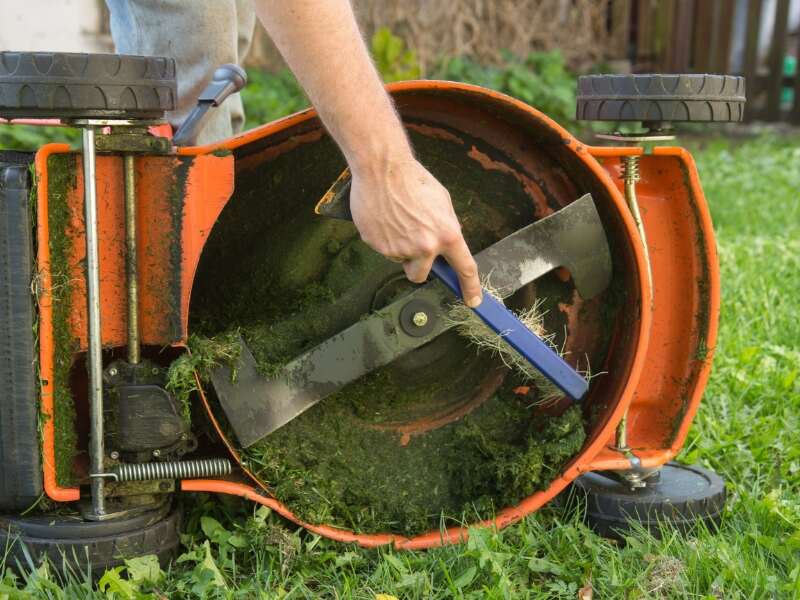
Sharpening Methods: DIY or Professional?
The path to sharp lawn mower blades can be taken in two ways: the DIY route or the professional approach. Each has its own advantages and disadvantages.
DIY Sharpening: A Hands-on Approach
For the DIY enthusiast, sharpening lawn mower blades can be a rewarding and cost-effective task. With the right tools and a bit of know-how, you can restore your blades to their former glory.
Two common methods for DIY sharpening are using a sharpening stone and using a bench grinder. A sharpening stone is a handheld abrasive tool that allows for precise control over the sharpening process. A bench grinder, on the other hand, is a powered tool that can sharpen blades more quickly and efficiently.
Professional Sharpening: Convenience and Expertise
If you’re short on time, lack the necessary tools or experience, or simply prefer the peace of mind that comes with professional care, seeking out a reputable lawn mower sharpening service is a great option.
Professional sharpeners have the expertise and equipment to handle even the most complex sharpening tasks, ensuring that your blades are sharpened to the correct angle and with the utmost precision.
Preventive Maintenance: Keeping Blades Sharp for Longer
While regular sharpening is essential, there are steps you can take to extend the lifespan of your lawn mower blades and reduce the frequency of sharpening.
-
Regular Cleaning: After each mowing session, take a few minutes to clean your lawn mower blades, removing any grass clippings or debris that can accumulate and dull the edges.
-
Proper Storage: When storing your lawn mower for the off-season, ensure that the blades are clean and dry to prevent rust and corrosion.
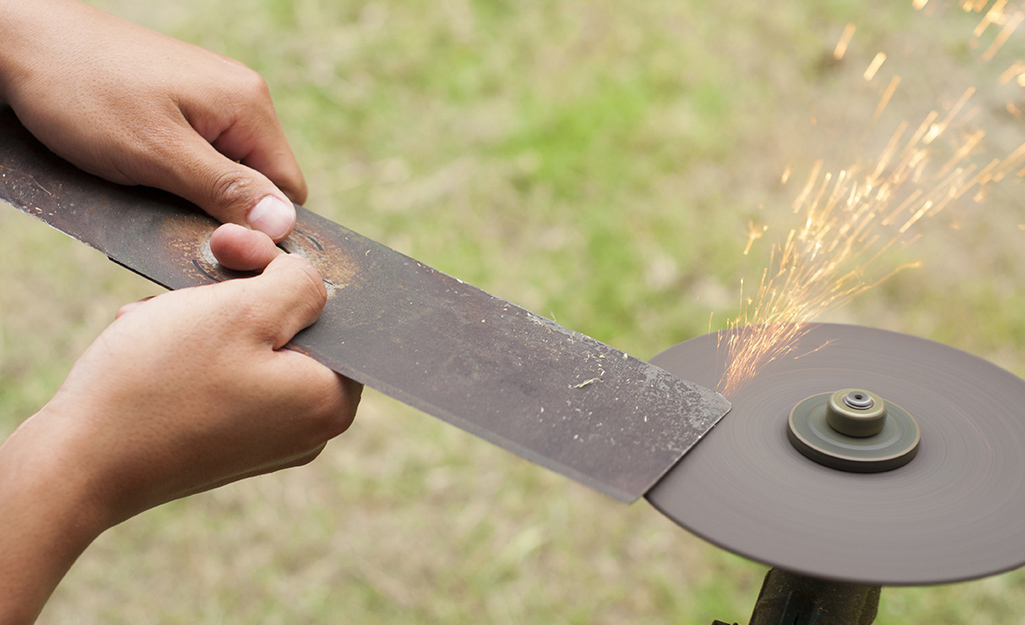
Environmental Impact of Sharp Blades: A Greener Approach
Using sharp lawn mower blades not only benefits your lawn and your mower but also contributes to a healthier environment.
Sharp blades promote healthy grass growth, reducing the need for excessive mowing and the associated fuel consumption. They also minimize the risk of lawn diseases, which can require harmful pesticides.
Choosing the Right Sharpening Tools:
-
Sharpening Stone: For those who prefer a traditional approach, a sharpening stone offers good control and is relatively inexpensive. Choose a medium-grit stone for lawn mower blades.
-
Bench Grinder: If speed and efficiency are priorities, a bench grinder can be a great option. However, it requires more practice to maintain the correct angle and avoid overheating the blade.
-
Sharpening Jigs: These specialized tools help maintain the correct angle during sharpening, especially if using a bench grinder. This can be particularly beneficial for beginners.
Safety First:
-
Eye Protection: Always wear safety glasses when sharpening lawn mower blades to protect your eyes from flying debris.
-
Gloves: Wearing gloves protects your hands from cuts and scrapes while handling the blades.
-
Secure Work Surface: Ensure your work surface is stable and level to prevent the mower blade from slipping during sharpening.

Sharpening Tips:
-
Sharpen Both Sides: Sharpen both the top and bottom edges of the blade for a clean, even cut.
-
Maintain the Angle: Strive to maintain the original angle of the blade during sharpening. A steeper angle may result in a more durable but less efficient cut, while a shallower angle may provide a cleaner cut but be less durable.
-
Sharpen Evenly: Use consistent strokes to achieve a uniform sharpness across the entire length of the cutting edge.
Beyond Sharpening: Blade Replacement
In some cases, depending on the extent of damage or wear, your lawn mower blades may need to be replaced entirely. Here are some signs that a replacement might be necessary:
-
Excessive Nicks or Cracks: Deep nicks or cracks in the blade can compromise its integrity and pose a safety hazard.
-
Bent or Warped Blades: A bent or warped blade will not cut evenly and can damage your lawn mower.
-
Signs of Metal Fatigue: If the blade appears thin or shows signs of metal fatigue, it’s best to replace it for safety reasons.
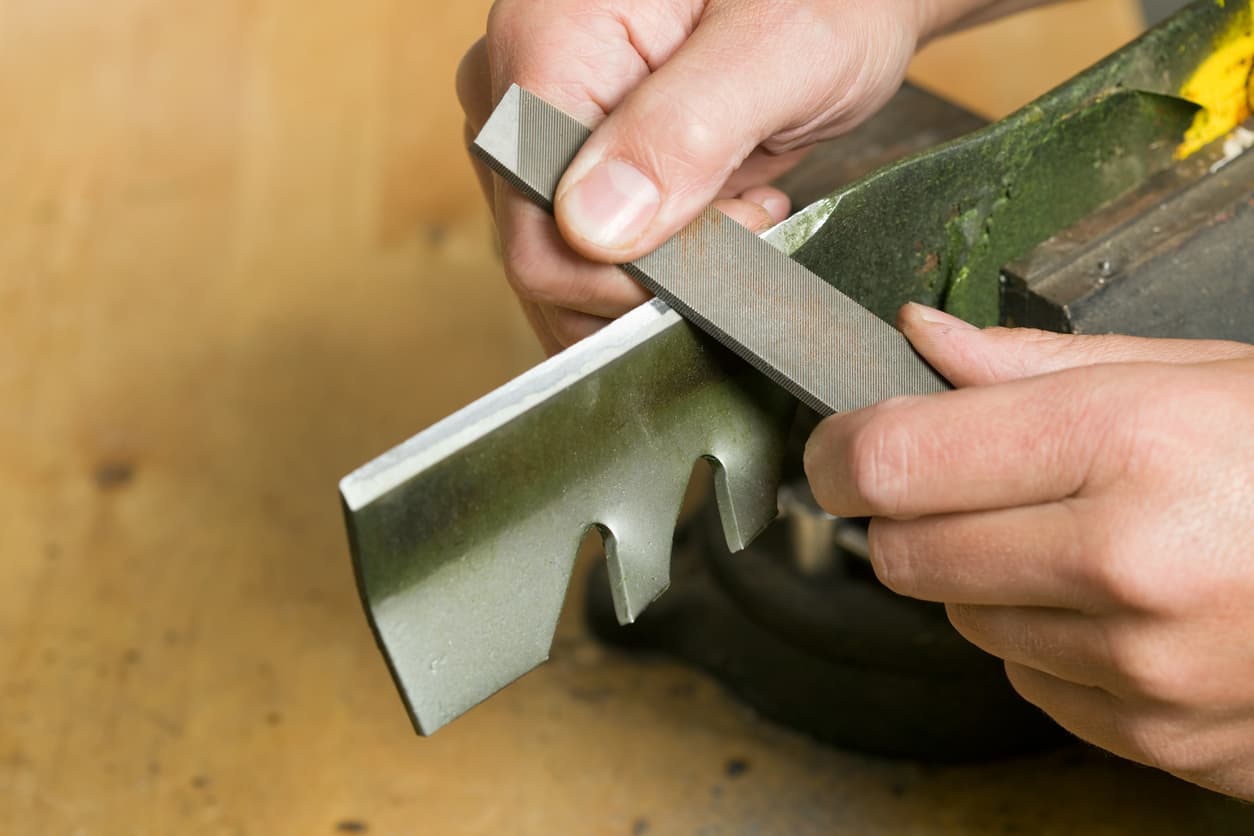
Conclusion: A Final Note
Keeping your lawn mower blades sharp is a crucial aspect of maintaining a healthy lawn and a well-functioning mower. By following the tips and choosing the methods outlined in this guide, you can ensure your lawn remains a source of pride and your mower continues to be a reliable partner in your quest for a perfect green haven. Remember, a little effort on your part can make a big difference in the long run. Now get out there and conquer that overgrown grass with confidence!

Squatted Lawn Mower Mowing Down the Norm

In the realm of lawn care, standard lawn mowers reign supreme, dutifully traversing backyards and maintaining pristine green carpets. However, amidst this sea of uniformity, a rebellious subculture has emerged, transforming ordinary mowers into eye-catching, performance-driven machines known as squatted lawn mowers.
These customized creations, characterized by their lifted front ends and lowered rear ends, have captured the attention of lawn care enthusiasts worldwide. Their aggressive stance and enhanced performance have made them a symbol of creativity, rebellion, and a passion for pushing the boundaries of lawn care.
Understanding the Allure of Squatted Lawn Mowers
The appeal of squatted lawn mowers lies in their unique blend of style and performance. Their aggressive stance, reminiscent of muscle cars or lowered trucks, exudes a sense of boldness and rebellion, setting them apart from their conventional counterparts.
Beyond aesthetics, squatted lawn mowers offer tangible performance benefits. The lowered rear end improves weight distribution, enhancing traction and stability, particularly on uneven terrain. The lifted front end increases ground clearance, allowing the mower to navigate obstacles with ease.
Moreover, squatted lawn mowers often feature customized wheels and suspension components, further enhancing their handling and performance. The result is a lawn mower that not only looks good but also delivers a superior mowing experience.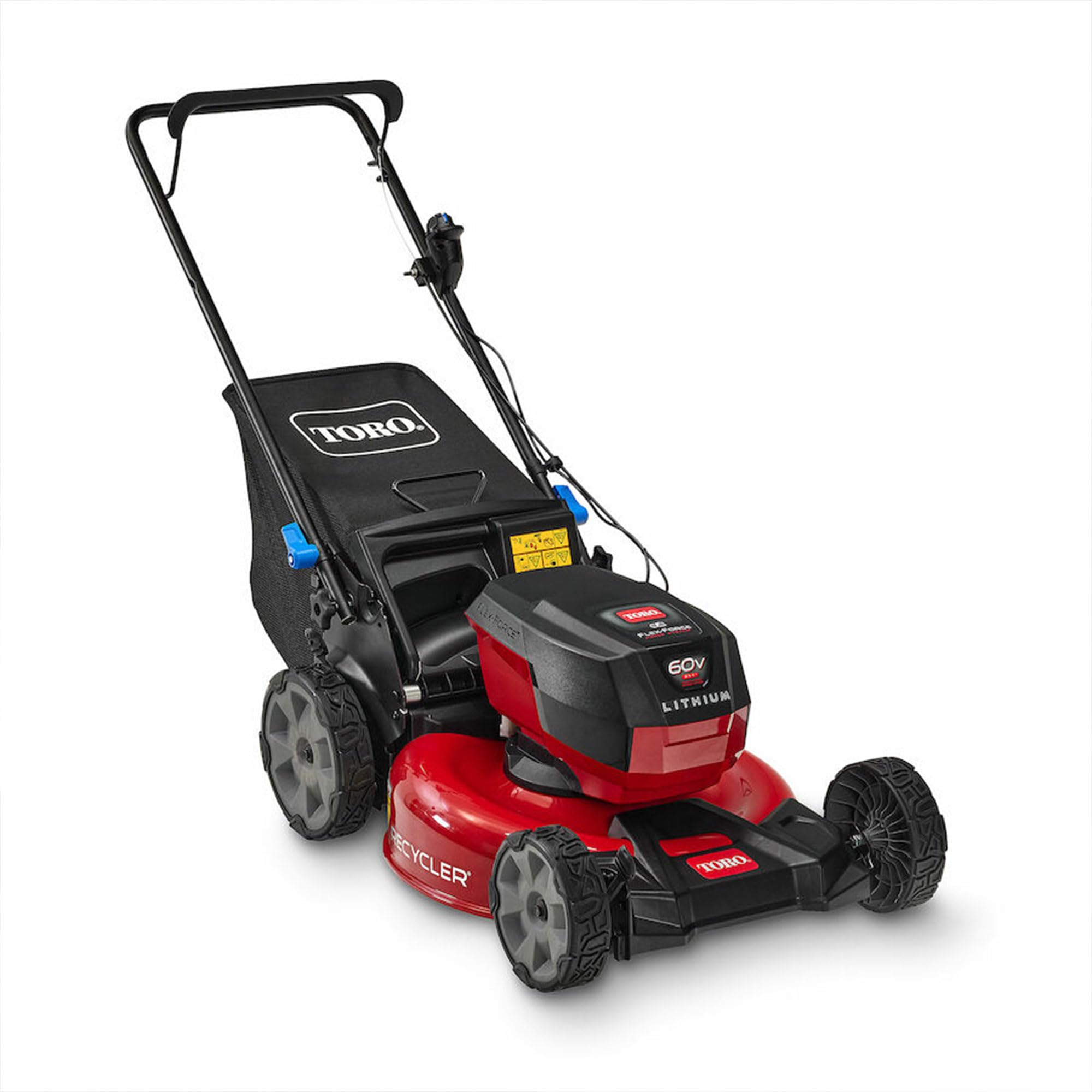
Essential Components for a Squatted Lawn Mower
Transforming a standard lawn mower into a squatted beast requires careful consideration of the components involved. The key elements include:
-
Suspension Modifications: The suspension system plays a crucial role in achieving the desired squatted stance. Methods such as spindle lifts, drop axles, and air suspension kits can be employed to raise the front end and lower the rear end.
-
Wheel Size Changes: Swapping out the standard wheels for larger ones can further enhance the squatted look and provide a smoother ride. However, it’s essential to consider the impact on ground clearance and potential compatibility issues.
-
Bodywork Adjustments: Minor adjustments to the bodywork, such as trimming the front bumper or relocating the headlights, may be necessary to complement the squatted stance and maintain a clean, streamlined appearance.
Safety Considerations and Potential Drawbacks
While squatted lawn mowers offer a unique blend of style and performance, safety must always be a top priority. Excessive lowering can reduce ground clearance, potentially causing the mower to scrape against obstacles or damage the underside.
Additionally, modifications to the suspension and steering systems can alter the mower’s handling characteristics, requiring a period of adjustment to ensure safe operation. It’s crucial to test the modified mower in a controlled environment before venturing into open areas.
Legal Regulations and Local Restrictions
Before embarking on a squatted lawn mower project, it’s essential to research and comply with any applicable legal regulations or local restrictions regarding modified vehicles. These regulations may vary by jurisdiction and can cover aspects such as vehicle height, safety equipment, and noise levels.
Failure to adhere to local laws can result in fines, legal issues, and potential safety hazards. Always prioritize safety and ensure your squatted lawn mower meets the legal requirements for safe operation.
DIY vs. Professional Installation
The decision to squat a lawn mower yourself or seek professional assistance depends on your mechanical expertise, comfort level, and budget. DIY squatting can be a rewarding experience, allowing you to customize your mower to your exact specifications and save on labor costs.
However, if you lack mechanical experience or have complex modifications in mind, seeking professional installation is highly recommended. Experienced technicians can ensure proper installation, alignment, and safety checks, providing peace of mind and avoiding potential issues.
Showcasing Examples of Squatted Lawn Mowers
The world of squatted lawn mowers is a canvas of creativity and personalization. From subtle modifications to extreme transformations, enthusiasts worldwide are pushing the boundaries of design and performance.
Some popular styles include the “slammed” look, featuring an extremely lowered stance and oversized wheels, and the “muscle car” look, characterized by a pronounced front lift and aggressive stance.
The Future of Squatted Lawn Mowers
The popularity of squatted lawn mowers shows no signs of waning. As technology advances and enthusiasts continue to experiment, we can expect to see even more innovative modifications and performance enhancements.
The possibility of squatted lawn mowers becoming more mainstream exists, potentially influencing lawn mower designs and trends. Manufacturers may incorporate squatted elements into their standard models, catering to the growing demand for these unique machines.
Conclusion: A Subculture Thriving
Squatted lawn mowers have carved a niche in the lawn care world, representing a subculture of creativity, rebellion, and a passion for pushing the boundaries of the ordinary. Their unique blend of style and performance has captured the hearts of enthusiasts worldwide, transforming lawn mowing from a mundane chore into an expression of individuality.
As the squatted lawn mower movement continues to evolve, we can expect to see even more innovation, customization, and a thriving community of enthusiasts. So, whether you’re a seasoned lawn care veteran or a curious newcomer, the world of squatted lawn mowers offers a unique perspective on lawn care, inviting you to explore the possibilities and unleash your inner lawn mower rebel.
Additional Resources
Delving deeper into the world of squatted lawn mowers requires venturing beyond this guide. Here are some valuable resources to fuel your passion:
-
Online Forums and Communities: These online havens connect enthusiasts from all over the world, allowing you to share ideas, showcase your creations, and seek advice from experienced squatters.
-
Websites and Blogs: Dedicated websites and blogs offer a wealth of information, including tutorials on squatting techniques, inspiration galleries featuring stunning examples, and news about the latest trends and developments.
-
Social Media Groups: Social media groups provide a platform for enthusiasts to connect, share pictures and videos of their squatted lawn mowers, and participate in discussions about all things squatted.

Glossary of Terms
-
Spindle Lift: A method of raising the front end of a lawn mower by modifying the spindles that connect the wheels to the deck.
-
Drop Axle: A method of lowering the rear end of a lawn mower by replacing the stock axle with a lower one.
-
Air Suspension Kit: A system that replaces the traditional coil springs with air bags, allowing for precise adjustment of the ride height and creating a truly “slammed” stance.
-
Stance: The overall posture of the lawn mower, determined by the relative heights of the front and rear ends. A squatted lawn mower has a lower rear end and a higher front end.
With this comprehensive guide and the additional resources provided, you are now equipped to navigate the exciting world of squatted lawn mowers. Remember, prioritize safety, embrace your creativity, and join the thriving community of lawn care rebels who are redefining the way we mow our lawns.

Taming the Oil Drip: Fixing Lawn Mower Oil Leaks
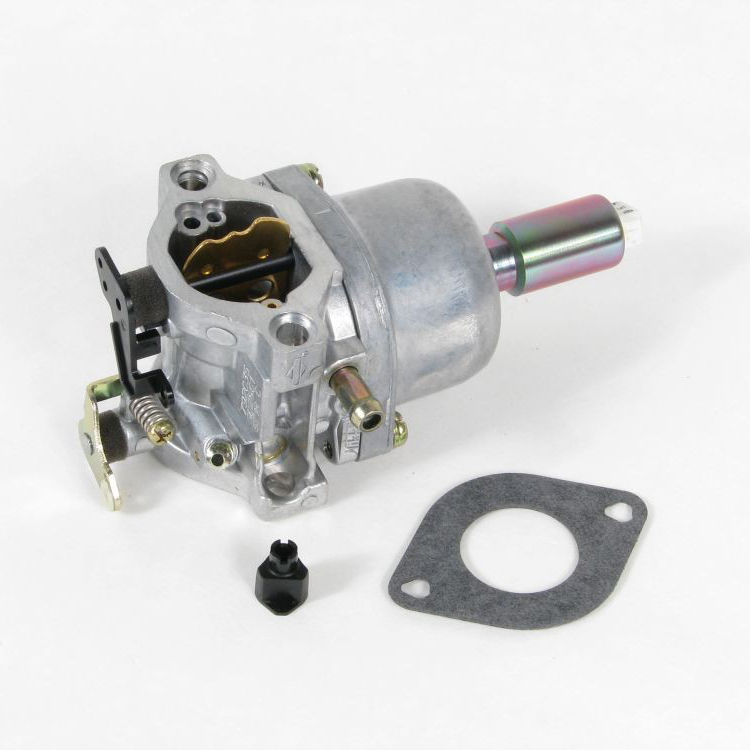
In the realm of lawn care, the humble lawn mower stands as a silent warrior, tirelessly battling overgrown grass and maintaining pristine yards. However, even these stalwart machines are not immune to mechanical woes, and one common issue that can plague lawn mowers is oil leaks.
While oil leaks may seem like a minor inconvenience, they can have serious consequences if left unchecked. Oil is the lifeblood of your lawn mower’s engine, providing lubrication and cooling to keep it running smoothly. A leak can rob your engine of this vital fluid, leading to premature wear, reduced performance, and even costly repairs.
But fear not, fellow lawn care enthusiasts! This comprehensive guide will equip you with the knowledge and tools to tackle those pesky oil leaks, ensuring your lawn mower remains a reliable ally in your quest for a picture-perfect lawn.
Understanding the Role of Oil in Lawn Mowers
Before delving into the world of oil leaks, it’s crucial to understand the vital role oil plays in your lawn mower’s engine. As the engine’s internal components whiz and whir, oil acts as a protective barrier, reducing friction and preventing metal-on-metal contact.
Imagine your engine as a bustling city, with countless tiny parts moving in intricate harmony. Oil serves as the city’s transportation system, ensuring that each component receives the lubrication it needs to function smoothly. Without oil, this bustling city would grind to a halt, much like your lawn mower’s engine would without proper lubrication.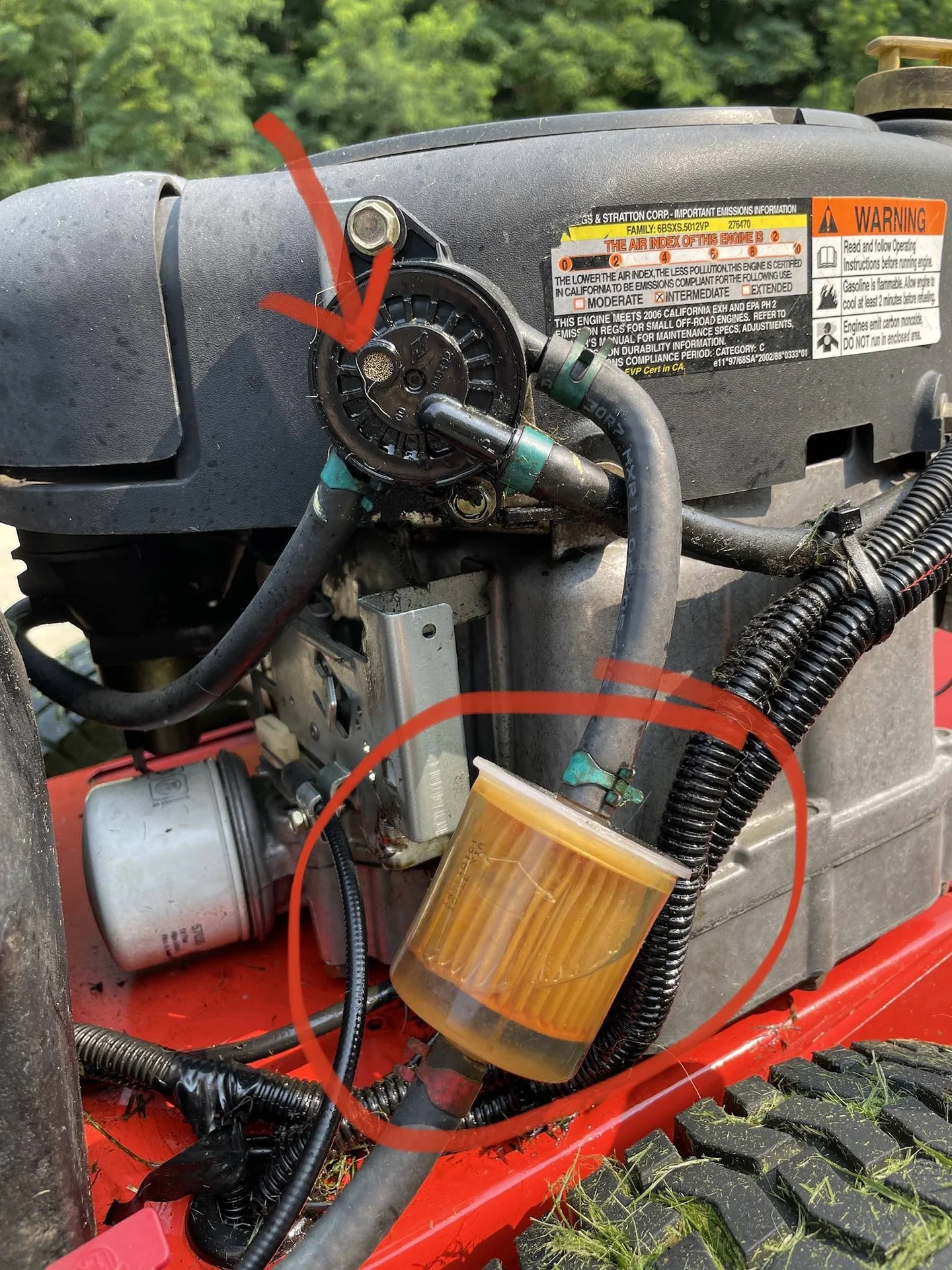
Common Causes of Lawn Mower Oil Leaks
Now, let’s explore the potential culprits behind those pesky oil leaks. While oil leaks can occur in various locations, there are a few common areas to keep an eye on.
-
Dipstick: This handy tool, used to check oil levels, can sometimes become loose or damaged, allowing oil to escape.
-
Oil Filler Cap: This cap seals the oil filler hole, preventing oil from spilling out. If the cap is cracked, loose, or missing, you’ve found your leak source.
-
Gaskets: These thin seals lie between various engine components, preventing oil from leaking out. Over time, gaskets can wear out or become damaged, leading to leaks.
-
Seals: Similar to gaskets, seals create a tight barrier between components. Like gaskets, they can wear out or become damaged, causing leaks.
Identifying Oil Leaks: Visual Clues and Smoke Signals
Detecting an oil leak early is crucial to prevent further damage and costly repairs. Here are some telltale signs to watch for:
-
Visual Inspection: Keep an eye out for visible oil stains on your lawn mower’s body, especially around the areas mentioned earlier.
-
Smoke Signals: Run your lawn mower for a few minutes and observe the exhaust. If you notice a bluish or white smoke plume, it could indicate an oil leak burning off.
Remember, regular inspections are your best defense against oil leaks. Make it a habit to check your mower for signs of leaks after each use.
Troubleshooting and Fixing Oil Leaks: A Step-by-Step Guide
Once you’ve identified the source of the leak, it’s time to take action. Here’s a general guide to fixing common oil leaks:
-
Tightening Loose Fittings: If the leak is coming from a loose fitting, such as the dipstick or oil filler cap, simply tighten it securely using a wrench or screwdriver.
-
Replacing Worn Gaskets: For leaks involving gaskets, you’ll need to replace the damaged gasket. This may require some disassembly of the engine, so consult your lawn mower’s manual for specific instructions.
-
Using Sealants: For leaks around seals, you can use a sealant to fill in any gaps and create a tight seal. Apply the sealant according to the product’s instructions.

Professional Assistance: When to Seek Help
While some oil leaks can be tackled by DIY enthusiasts, others may require professional assistance. If you’re dealing with a complex leak, involving major engine components, or lack the mechanical expertise, it’s best to consult a qualified lawn mower technician.
A reputable technician can accurately diagnose the problem, perform the necessary repairs, and ensure your lawn mower is back in top condition.
Preventive Maintenance: Preventing Oil Leaks in the First Place
An ounce of prevention is worth a pound of cure. Regular maintenance can go a long way in preventing oil leaks from occurring in the first place.
-
Check Oil Levels Regularly: Use the dipstick to check your oil level before each use and add oil if necessary.
-
Inspect Gaskets and Seals: During regular maintenance, inspect gaskets and seals for signs of wear or damage. Replace them as needed.
-
Clean Your Mower Regularly: Keep your lawn mower clean to prevent dirt, debris, and moisture from accumulating around seals and gaskets, potentially causing leaks.

Environmental Impact of Oil Leaks: Protecting Our Planet
Beyond the impact on your lawn mower, oil leaks can have a detrimental effect on the environment. Leaked oil can seep into the soil and contaminate groundwater, harming plant life and wildlife.
-
Proper Oil Disposal: Always dispose of used oil responsibly. Never pour it down the drain or onto the ground. Many local recycling centers accept used oil.
-
Environmentally Friendly Practices: Consider using environmentally friendly lawn care practices, such as composting grass clippings and using natural fertilizers. These practices can help reduce your lawn mower’s reliance on oil and minimize the potential environmental impact of leaks.
Conclusion: Maintaining a Healthy Lawn Mower
By understanding the role of oil, identifying leaks, addressing them promptly, and implementing a regular maintenance routine, you can ensure your lawn mower operates smoothly and reliably for years to come. A well-maintained lawn mower not only delivers a superior mowing experience but also protects your investment and contributes to a healthy environment.
So, the next time you encounter an oil leak, don’t despair. With the knowledge and tools provided in this guide, you can tackle the problem head-on, ensuring your lawn mower continues to be a valuable partner in your quest for a perfect lawn.

Additional Resources:
This guide provides a general overview of lawn mower oil leaks. For more specific information, consider consulting the following resources:
-
Lawn mower repair manuals and online guides: Consult your lawn mower’s manual for specific instructions on troubleshooting leaks for your model. Many websites offer detailed repair guides and tutorials.
-
Videos and tutorials on troubleshooting and fixing oil leaks: Visual learners may find videos and tutorials particularly helpful. These resources can provide step-by-step guidance on fixing common oil leaks.
-
Information on proper oil disposal and environmentally friendly lawn care practices: Learn more about responsible oil disposal and discover environmentally friendly lawn care practices to reduce your impact on the environment.
With a little knowledge, proactive maintenance, and a willingness to take action, you can overcome the challenge of oil leaks and ensure your lawn mower remains a dependable ally in your journey towards a lush and vibrant lawn.
-

The Art of Chainsaw Maintenance
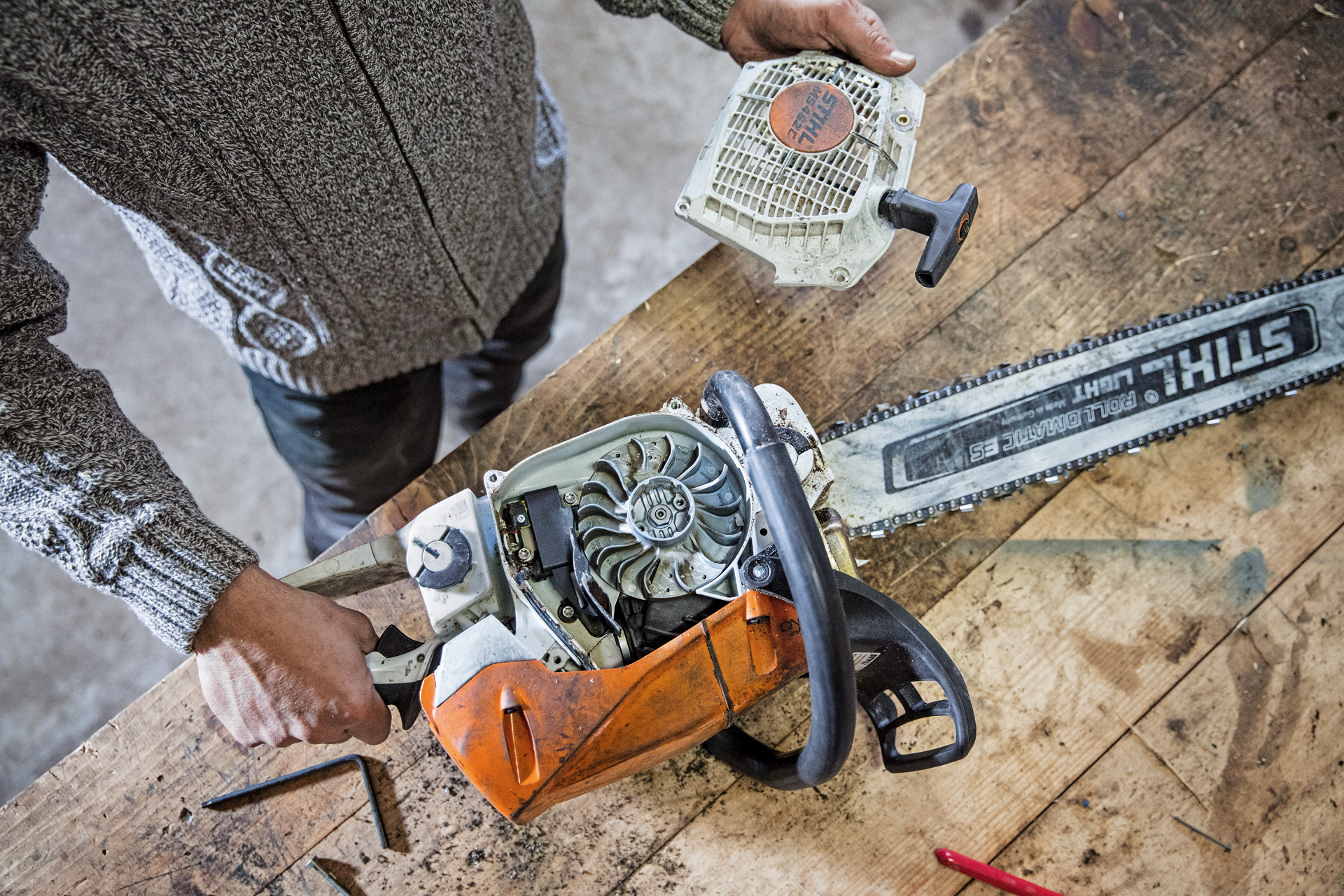
In the realm of power tools, chainsaws stand as undisputed champions, their sharp teeth and mighty engines conquering the wilderness with untamed efficiency. However, like any formidable force, chainsaws demand respect and proper care. Regular maintenance is not merely an option; it’s an essential ritual that ensures your chainsaw remains a loyal companion, not a temperamental beast.
The Daily Grind: Essential Checks for a Smooth Run
Before each use, a quick once-over is your best defense against unexpected breakdowns. Start by inspecting the chain, the lifeblood of your chainsaw. Ensure it’s sharp and tensioned correctly, a delicate balance that guarantees smooth cuts and minimizes strain on the engine. Next, check the oil level and lubricate the chain, providing the vital lubrication that keeps the chain from grinding against the bar, generating friction and premature wear.
Examine the bar, the guiding rail along which the chain dances. Check for wear and damage, as a worn-out bar can lead to chain derailment or kickback, a sudden and dangerous backward motion of the chainsaw. Next, turn your attention to the air filter, the breathing apparatus of your chainsaw. A clogged filter restricts airflow, starving the engine and causing performance issues. Clean it regularly to keep your chainsaw breathing easy.
Finally, give the starter cord and recoil spring a quick inspection. These unsung heroes ensure a smooth start, and any signs of wear or damage should prompt replacement to avoid frustrating no-starts.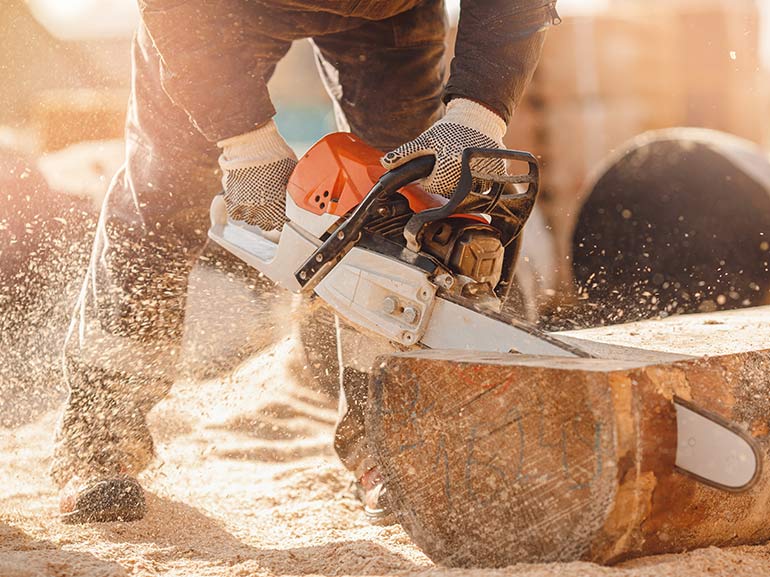
Weekly Rituals: Deeper Dives for Optimal Performance
Once a week, dedicate some time to a more thorough examination of your chainsaw. Start by cleaning the spark plug, the ignition point that ignites the fuel-air mixture. A dirty spark plug can lead to hard starting and misfires. Check the gap between the electrodes and adjust if necessary.
Next, inspect the cooling fins, the aluminum fins that dissipate heat from the engine. If clogged with debris, they can’t do their job, causing the engine to overheat. Clean them gently with a brush or compressed air. Check the fuel lines for leaks, as fuel leaks not only waste precious fuel but also pose a fire hazard.
Tighten loose screws and bolts, ensuring that your chainsaw remains a cohesive unit. If the chain appears dull, don’t hesitate to sharpen it, as a sharp chain is crucial for optimal performance and safety.
Monthly Maintenance: A Deeper Dive into the Inner Workings
Once a month, delve deeper into the inner workings of your chainsaw. Start by cleaning the carburetor, the complex heart of the engine that mixes fuel and air. A dirty carburetor can cause a range of issues, from rough idling to stalling. Consult your owner’s manual for specific cleaning instructions.
Check the fuel filter, a small screen that prevents impurities from entering the carburetor. A clogged filter can starve the engine of fuel. Replace it if necessary. If the air filter hasn’t been replaced during your weekly checks, this is the time to do so.
Inspect the muffler, the device that reduces engine noise. A damaged muffler can not only be excessively loud but also indicate internal engine issues. Check the brake system, the safety feature that stops the chain in case of kickback. Ensure it’s functioning properly and replace any worn components.
Sharpening the Chain: The Art of a Razor-Sharp Edge
A sharp chain is the key to a smooth, efficient, and safe cutting experience. A dull chain increases the risk of kickback, strains the engine, and leads to premature wear. Sharpening your chain regularly is essential.
Invest in a quality chainsaw sharpening tool, such as a file, grinder, or filing guide. Each tool has its advantages, so choose the one that suits your preferences and skill level. Master the proper filing angles and techniques, ensuring that each tooth is sharpened evenly and to the correct depth.
Fuel and Oil: The Lifeblood of Your Chainsaw
The type of fuel and oil you use plays a crucial role in the performance and longevity of your chainsaw. Always use the fuel type recommended by your chainsaw manufacturer. Mixing fuel and oil in the proper ratio is essential; too much oil can clog the engine, while too little can lead to lubrication issues.
Choose the right bar and chain oil, considering the viscosity grade recommended by the manufacturer and the climate and cutting conditions you’ll be facing. Check the oil level regularly and top up as needed.
Safety First: Essential Precautions for a Hazard-Free Experience
Chainsaws are powerful tools that demand respect. Always work in a safe environment, clearing the work area of debris and obstacles that could cause you to stumble or lose control. Wear appropriate personal protective equipment (PPE), including safety glasses, gloves, ear protection, and sturdy boots.
Maintain a safe distance from others and structures to avoid accidental injuries or property damage. When handling the chainsaw, carry it properly, with the chain pointed away from you and your body. Start and stop the chainsaw in a safe manner, following the manufacturer’s instructions. Finally, develop proper cutting techniques to maximize efficiency and minimize risk.
Storing Your Chainsaw: A Secure Haven for Your Powerhouse
Once your work is done, don’t simply abandon your chainsaw. Before storing it, clean the exterior to remove debris that could attract moisture or pests. Store the chainsaw in a dry, well-ventilated area, protected from extreme temperatures and direct sunlight. If storing for an extended period, drain the fuel and oil to prevent gumming and clogging in the carburetor and fuel lines.
Troubleshooting Common Problems: When Your Chainsaw Coughs
Even with the best maintenance, your chainsaw might encounter hiccups. Common problems include hard starting, poor performance, excessive smoke, oil leaks, and chain skipping or breaking. Don’t panic! Familiarize yourself with these issues and their potential causes. Refer to your chainsaw’s owner’s manual for specific troubleshooting steps and solutions.
For more complex problems, consider consulting a qualified chainsaw technician. Their expertise can diagnose and fix issues beyond your comfort level, ensuring your chainsaw is back in top shape in no time.
Conclusion: The Rewards of a Well-Maintained Chainsaw
Regular chainsaw maintenance might seem like a chore, but the rewards are undeniable. A well-maintained chainsaw is a reliable and efficient tool, a loyal partner that tackles any cutting task with ease. Proper maintenance extends the life of your chainsaw, saving you money on repairs and replacements in the long run.
Most importantly, investing in maintenance prioritizes safety. A well-maintained chainsaw minimizes the risk of kickback and other accidents, allowing you to focus on the job at hand with confidence. Remember, a little care goes a long way. By incorporating these practices into your routine, you can transform your chainsaw from a potentially dangerous tool into a dependable and enjoyable companion, ready to conquer any cutting challenge.

Why are people scared of chainsaws
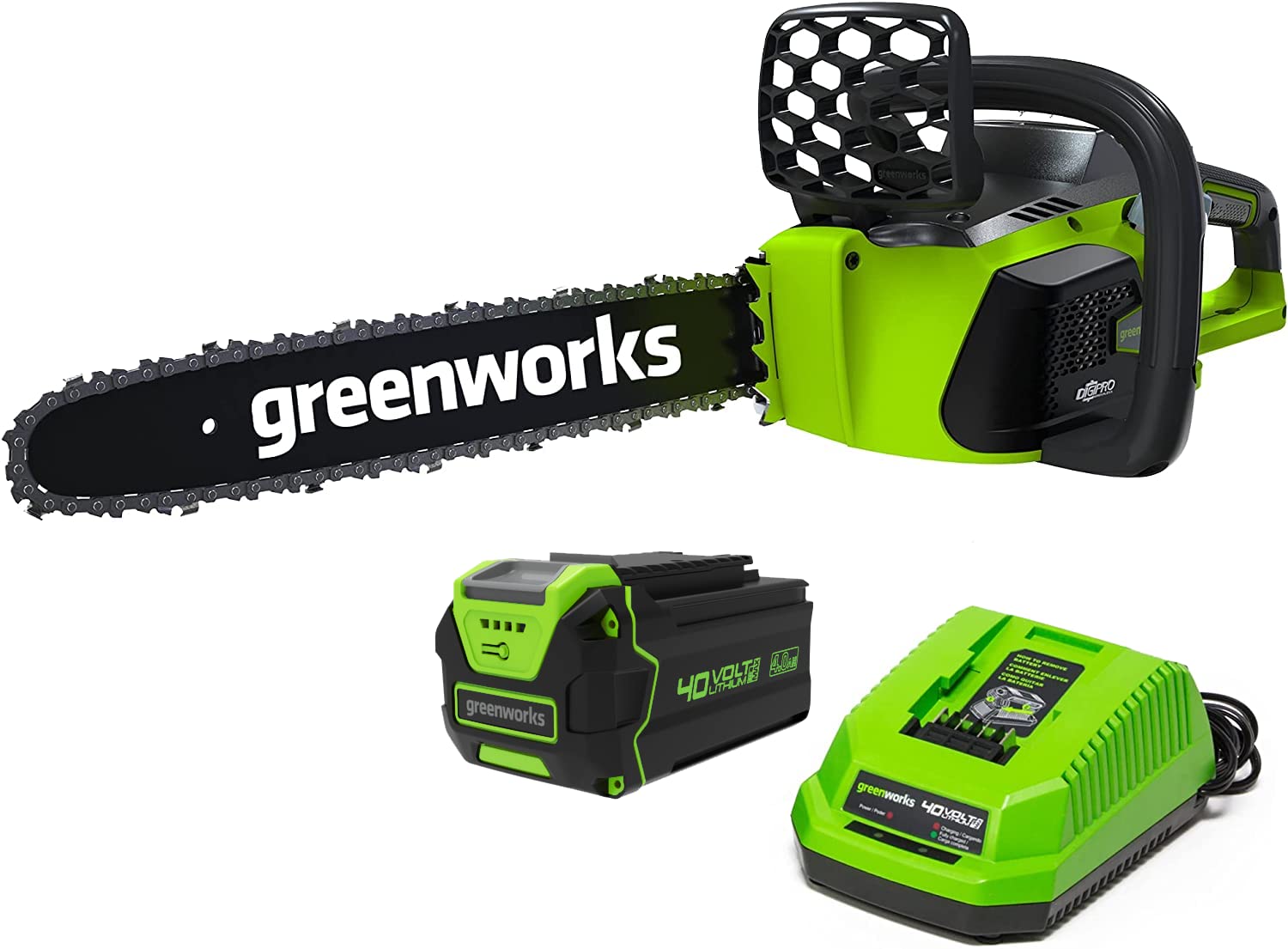
Chainsaws, those quintessential tools of lumberjacks and DIY enthusiasts, are often associated with power, efficiency, and the ability to tame nature’s unruly greenery. However, beneath this utilitarian image lies a darker undercurrent of fear. For many individuals, the mere sight or sound of a chainsaw can trigger a surge of anxiety, dread, and even paralyzing terror. This pervasive fear, often categorized as chainsaw phobia or motoserrophobia, is rooted in a complex interplay of physical dangers, cultural representations, and personal experiences.
The Looming Threat of Physical Harm
At its core, chainsaw fear is deeply entwined with the very real threat of physical harm that these machines pose. The razor-sharp, rotating blades, capable of inflicting gruesome injuries with the slightest misstep, are a constant reminder of the chainsaw’s destructive potential. The deafening roar of the engine adds to the sense of menace, further amplifying the fear response. The unpredictable nature of chainsaw kickback, a sudden and violent backward motion of the machine, adds another layer of danger, reinforcing the perception of chainsaws as unpredictable and potentially deadly weapons.
Chainsaws in the Realm of Fear: Cultural Representations
The fear of chainsaws extends beyond the physical realm, deeply embedded in the cultural landscape. Horror movies and literature have played a significant role in shaping our perception of these machines as instruments of terror. Iconic characters like Jason Voorhees from the Friday the 13th franchise and Leatherface from The Texas Chain Saw Massacre have cemented the association of chainsaws with violence, bloodshed, and relentless pursuit. These cinematic portrayals have seeped into popular culture, reinforcing the notion of chainsaws as symbols of impending doom and inflicting psychological damage on unsuspecting viewers.
The Personal Touch: Individual Encounters and Fear Transmission
While cultural representations undoubtedly amplify chainsaw fear, personal experiences play an equally significant role. Negative encounters with chainsaws, whether witnessing accidents or experiencing them firsthand, can leave an indelible mark on one’s psyche. The graphic images of injuries sustained from chainsaw misuse can fuel fear and anxiety, making it difficult to dissociate these machines from potential harm. Moreover, fear can be transmitted through family and cultural narratives, with stories of chainsaw-related mishaps passed down through generations, perpetuating the perception of these tools as dangerous and to be avoided.
The Psychological Impact: Anxiety, Avoidance, and Generalized Fear
The fear of chainsaws can manifest in a range of psychological symptoms, including anxiety, panic attacks, and avoidance behaviors. Individuals with chainsaw phobia may experience intense anxiety and fear when confronted with these machines, even in controlled environments. Panic attacks, characterized by sudden episodes of intense fear and physical distress, can become debilitating, restricting daily activities and causing significant distress. Avoidance behaviors, such as refusing to operate chainsaws or even be in their vicinity, are a common coping mechanism, but they can significantly limit one’s ability to engage in everyday tasks and hobbies.
Navigating the Grip of Fear: Strategies for Management
While chainsaw fear can be a debilitating condition, there are effective strategies for managing and overcoming it. Gradual exposure therapy, under the guidance of a qualified therapist, can help individuals desensitize themselves to chainsaws, starting with pictures and videos and gradually progressing to real chainsaws in a controlled setting. Cognitive-behavioral therapy (CBT) can be particularly helpful in addressing the irrational thoughts and beliefs that underlie chainsaw phobia. In severe cases, medication may be prescribe to manage anxiety symptoms and facilitate the therapeutic process.
Conclusion: Acknowledging Fear, Embracing Safety
Chainsaw fear, with its roots in physical danger, cultural representations, and personal experiences, is a complex and often debilitating condition. However, it is important to acknowledge that fear, while often irrational, serves an evolutionary purpose, alerting us to potential threats and protecting us from harm. By understanding the underlying mechanisms of chainsaw fear and employing effective coping strategies, individuals can regain control over their lives and safely navigate situations involving these powerful machines. Remember, safety should always be paramount when operating chainsaws, and seeking professional help when fear becomes overwhelming is a sign of strength, not weakness.
Beyond the Blade: Dispelling Myths and Embracing Safety
It’s important to differentiate between a healthy respect for the power of a chainsaw and a debilitating fear. Chainsaws are inherently dangerous tools, and taking safety precautions seriously is crucial. Always wear appropriate protective gear, including eye protection, gloves with good grip, ear protection, and sturdy footwear. Familiarize yourself with proper operating techniques and maintenance procedures before wielding a chainsaw.
However, media portrayals often exaggerate the dangers, fueling irrational fear. Chainsaws aren’t inherently malicious; they are tools, and like any tool, they can be used safely with proper training and caution.
The Power of Knowledge: Dismantling Myths
Understanding chainsaw mechanics can alleviate some fear. Kickback, for instance, is a preventable phenomenon. Maintaining a firm grip on the chainsaw and avoiding contact with the tip of the blade significantly reduces the risk. Similarly, a dull blade increases the likelihood of accidents. Keeping the blade sharp ensures cleaner cuts and reduces the effort required, minimizing the risk of operator fatigue and loss of control.
Breaking the Cycle: Embracing Empowerment
For those struggling with chainsaw phobia, conquering fear can be empowering. Joining a chainsaw safety course can provide valuable knowledge and hands-on experience in a controlled environment. Witnessing safe and responsible chainsaw operation can be a powerful tool for desensitization. Remember, many people use chainsaws safely and effectively for everyday tasks.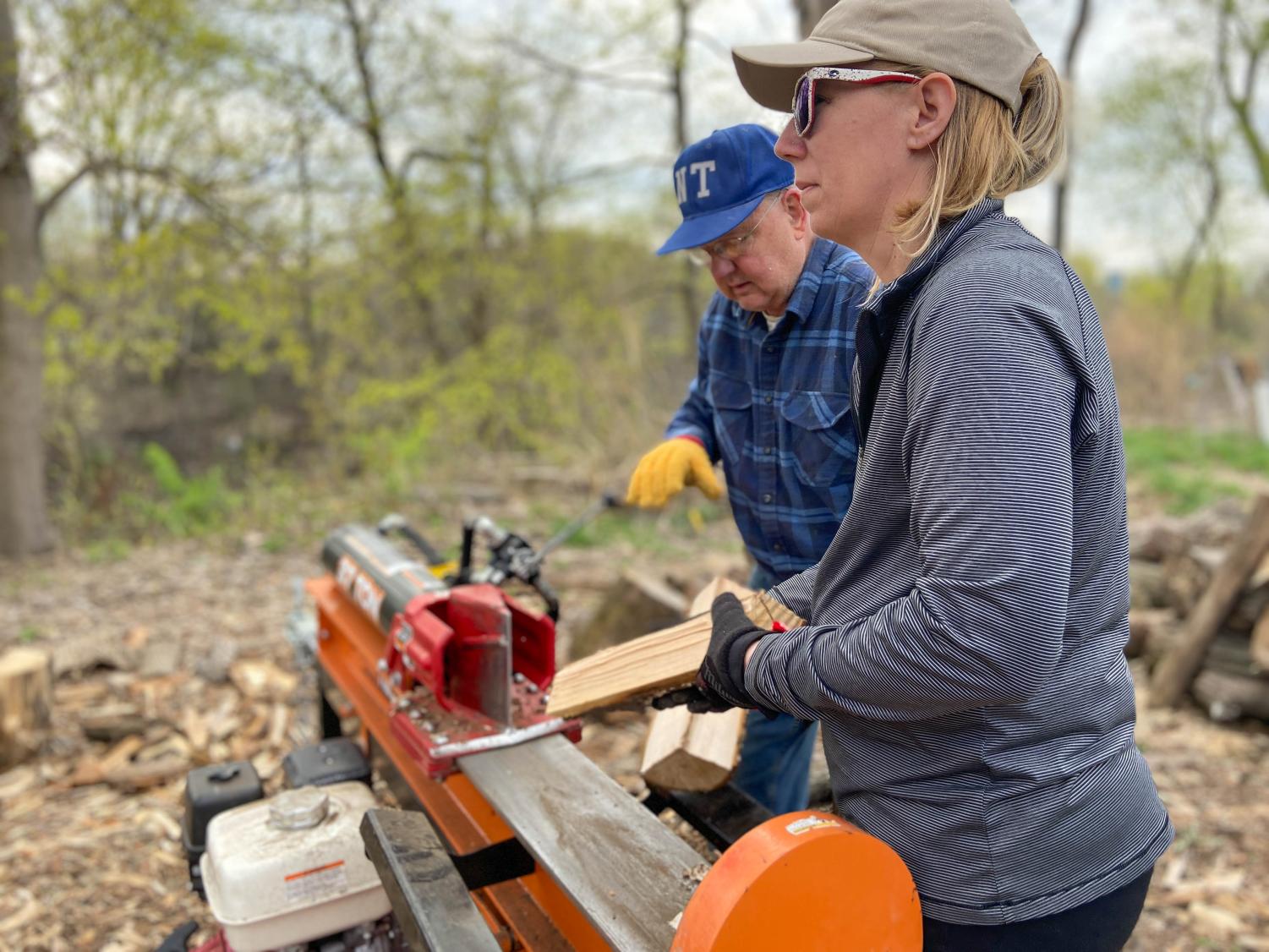
Chainsaws: Tools, Not Terrors
Ultimately, chainsaws are powerful tools with the potential to be dangerous when misused. Yet, by acknowledging the physical dangers, understanding the cultural influences on fear, and addressing personal experiences, we can navigate chainsaw phobia. With proper training, safety precautions, and a healthy respect for their power, chainsaws can become valuable tools for tackling outdoor tasks, not objects of paralyzing fear.
In conclusion, the fear of chainsaws is a complex issue, but one that can be address. By acknowledging the multifaceted nature of this fear and utilizing available resources, we can move beyond the grip of terror and embrace a more empowered and informed relationship with these powerful tools. Remember, knowledge is power, and when it comes to chainsaws, that knowledge translates to safety, confidence, and the ability to harness their potential for good.
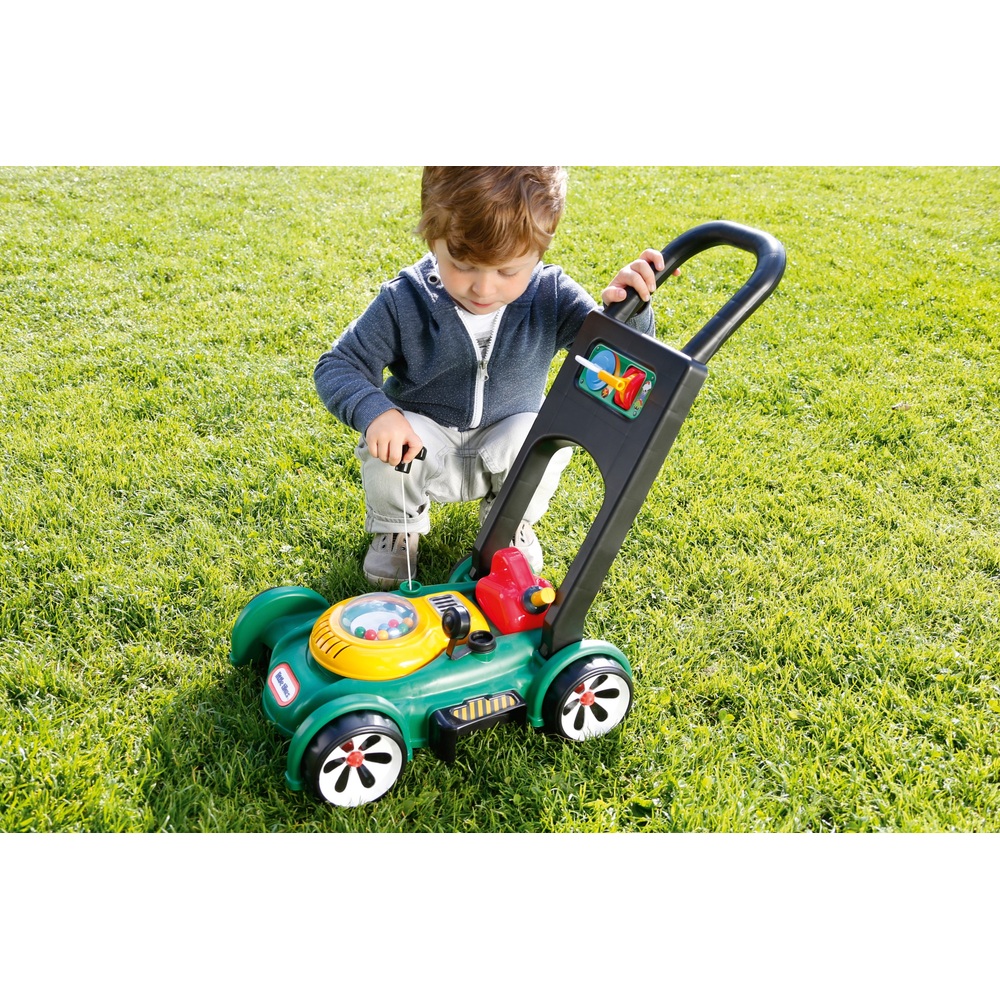
Little tikes lawn mower: A Fun and Rewarding Toy for Little Ones
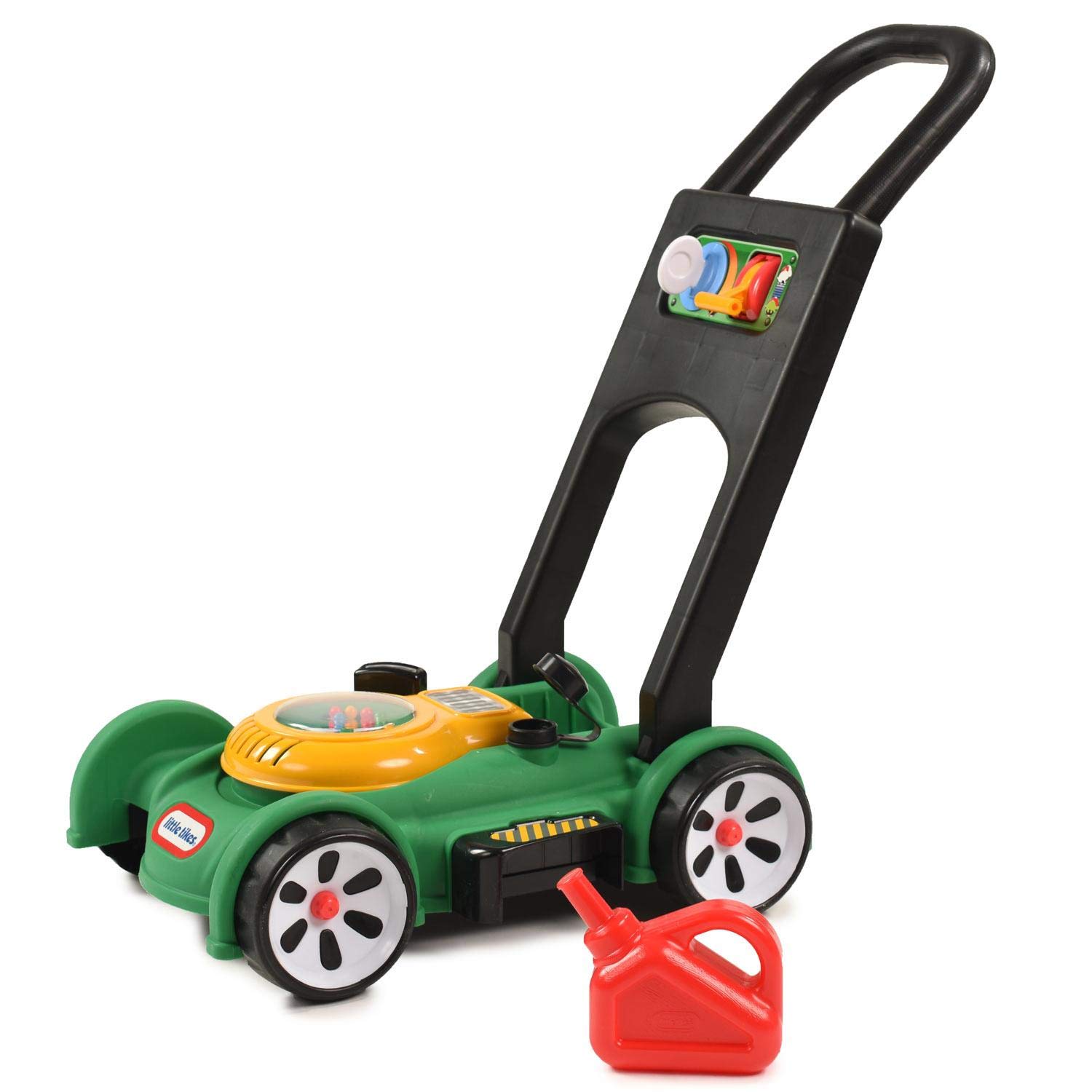
In the realm of childhood toys, few items hold the enduring appeal and imaginative spark of the Little Tikes Gas ‘n Go Mower. This iconic toy has been a staple in backyards and playrooms for generations, transforming playtime into an immersive experience that mimics the real-world task of lawn care. With its realistic sound effects, push-along design, and removable gas can, the Little Tikes Gas ‘n Go Mower ignites children’s imaginations, encouraging them to engage in active, creative, and socially interactive play.
1. Introduction: Nurturing a Love for Yard Work with Little Tikes Gas ‘n Go Mower
As children grow and observe the world around them, they develop a natural curiosity about the activities of their parents and other adults. Among these everyday tasks, lawn care holds a particular fascination, with its rhythmic movements, satisfying sounds, and the sense of accomplishment that comes with a neatly trimmed yard. The Little Tikes Gas ‘n Go Mower taps into this innate curiosity, providing a safe and engaging way for young ones to emulate the actions of their lawn-mowing heroes.
This beloved toy isn’t just about mimicking real-world activities; it’s a catalyst for imaginative play and storytelling. With the Little Tikes Gas ‘n Go Mower in hand, children can transform their backyards into bustling landscapes, their toy mowers becoming trusty tools as they embark on landscaping adventures. Whether they’re mowing the lawn for their imaginary family, helping out a neighbor, or creating their own landscaping business, the possibilities are endless.
2. Exploring the Features of the Little Tikes Gas ‘n Go Mower
The Little Tikes Gas ‘n Go Mower isn’t just a toy; it’s a carefully crafted experience that brings the world of lawn care to life for little ones. From its realistic sound effects to its easy-to-maneuver design, every feature is designed to enhance the pretend play experience and encourage active engagement.
One of the most captivating features of the Little Tikes Gas ‘n Go Mower is its realistic sound effects. As children push the mower along, they’re greeted with the satisfying rumble of an engine, the reassuring click of a starting key, and the cheerful popping of beads that simulate the movement of grass clippings. These sounds not only add to the realism of the toy but also provide auditory feedback, reinforcing the cause-and-effect relationship between pushing the mower and creating the sounds.
Another key feature is the push-along design, which makes the Little Tikes Gas ‘n Go Mower easy for toddlers to control and maneuver. The lightweight construction and sturdy wheels allow children to navigate their surroundings with confidence, whether they’re tackling the open expanse of their backyard or exploring the winding paths of a park. This ease of movement encourages physical activity and outdoor exploration, promoting healthy habits and gross motor skill development.
To further enhance the pretend play experience, the Little Tikes Gas ‘n Go Mower features a removable gas can. This simple yet effective detail adds a touch of realism to the toy, allowing children to mimic the process of refueling their lawnmowers before embarking on their mowing adventures. The removable gas can also serve as a storytelling prop, prompting children to create scenarios where they check the gas level, fill up the tank, or even pretend to fix a mechanical issue.
3. Benefits of the Little Tikes Gas ‘n Go Mower
Beyond its fun and engaging features, the Little Tikes Gas ‘n Go Mower offers a multitude of benefits for young children. It fosters imaginative play, encourages physical activity, and promotes social interaction and teamwork.
Imaginative Play: The Little Tikes Gas ‘n Go Mower is a powerful tool for imaginative play, allowing children to step into the role of lawn care professionals or homeowners taking pride in their yards. As they push the mower back and forth, they can create their own landscaping scenarios, pretending to mow for neighbors, tidy up their playhouses, or even start their own lawn care businesses. This type of imaginative play not only sparks creativity but also helps children develop their storytelling skills and problem-solving abilities.
Physical Activity: In a world increasingly dominated by screens and sedentary lifestyles, the Little Tikes Gas ‘n Go Mower is a refreshing reminder of the joys of outdoor play and physical activity. As children push the mower around their yards or parks, they engage their gross motor skills, improving their coordination, balance, and strength. This active play is essential for overall health and well-being, promoting a love of movement that can last a lifetime.
Social Interaction and Teamwork: The Little Tikes Gas ‘n Go Mower can also be a catalyst for social interaction and teamwork. When multiple children play together, they can take turns mowing different sections of the yard, collaborate on landscaping projects, or even create a lawn care team with assigned roles. This type of cooperative play fosters communication skills, teaches children about sharing and taking turns, and allows them to build friendships through shared experiences.
4. Age Recommendations and Safety Guidelines
While the Little Tikes Gas ‘n Go Mower is a fantastic toy for many young children, it’s important to consider age recommendations and safety guidelines to ensure a positive and enjoyable play experience. The Little Tikes Gas ‘n Go Mower is typically recommended for children 18 months and older. This age range ensures that children have the physical development and coordination necessary to safely push and maneuver the toy.
Adult supervision is always recommended when children are playing with the Little Tikes Gas ‘n Go Mower. This ensures their safety and allows parents or caregivers to intervene if any potential hazards arise. Additionally, adult supervision can provide opportunities for learning and engagement. Parents can help children create storylines for their pretend play, teach them about the importance of lawn care, or simply enjoy the joy of playing alongside their children.
When using the Little Tikes Gas ‘n Go Mower, it’s important to be mindful of potential hazards in the play environment. Uneven surfaces, like rocky terrain or steep hills, can be difficult for toddlers to navigate and could lead to tipping or falls. Similarly, avoid using the toy near water sources or areas with obstacles that children could trip over. By keeping safety at the forefront, you can ensure that playtime with the Little Tikes Gas ‘n Go Mower is a fun and rewarding experience for everyone involved.
5. Tips for Making the Most of the Little Tikes Gas ‘n Go Mower
With a little creativity, you can maximize the fun and learning potential of the Little Tikes Gas ‘n Go Mower. Here are a few tips to get you started:
-
Create an Obstacle Course: Transform your backyard into a mini-landscaping challenge by creating an obstacle course for the Little Tikes Gas ‘n Go Mower. Use cones, boxes, or other safe objects to create a winding path that children can navigate with their mowers. This not only adds an element of challenge but also helps develop their problem-solving and spatial reasoning skills.
-
Incorporate Pretend Play Scenarios: Take pretend play to the next level by incorporating different scenarios into playtime. Children can pretend to be professional landscapers hired to mow a specific lawn, help out a neighbor with their yard work, or even start their own lawn care business with their friends. By encouraging these scenarios, you’re helping children develop their communication and social skills, all while having fun.
-
Use the Toy in Different Settings: While the Little Tikes Gas ‘n Go Mower is perfect for outdoor play, it can also be enjoyed indoors on smooth surfaces like tile or hardwood floors. This allows for year-round fun, especially during colder months or rainy days. Just be sure to clear any potential obstacles and supervise children closely when playing indoors.
6. Similar Toys from Little Tikes
Little Tikes offers a wide range of engaging toys that promote imaginative play and physical activity. Here are a few popular options that complement the Little Tikes Gas ‘n Go Mower:
-
Little Tikes Cozy Coupe: This iconic ride-on toy allows children to get behind the wheel and explore their surroundings in a safe and imaginative way. Similar to the Gas ‘n Go Mower, the Cozy Coupe encourages pretend play and outdoor adventures.
-
Little Tikes First Slide: This classic slide provides hours of fun and promotes gross motor skill development. Children can climb, slide, and repeat, developing their balance, coordination, and leg strength. The Little Tikes First Slide is a great addition to any backyard and pairs well with the Gas ‘n Go Mower for a complete outdoor playset.
-
Little Tikes Sandbox: Sandboxes offer a sensory experience that sparks creativity and imagination. Children can build sandcastles, sculpt shapes, and explore different textures, all while developing their fine motor skills and hand-eye coordination. The Little Tikes Sandbox is a perfect complement to the Gas ‘n Go Mower, providing a diverse range of play activities in one backyard.
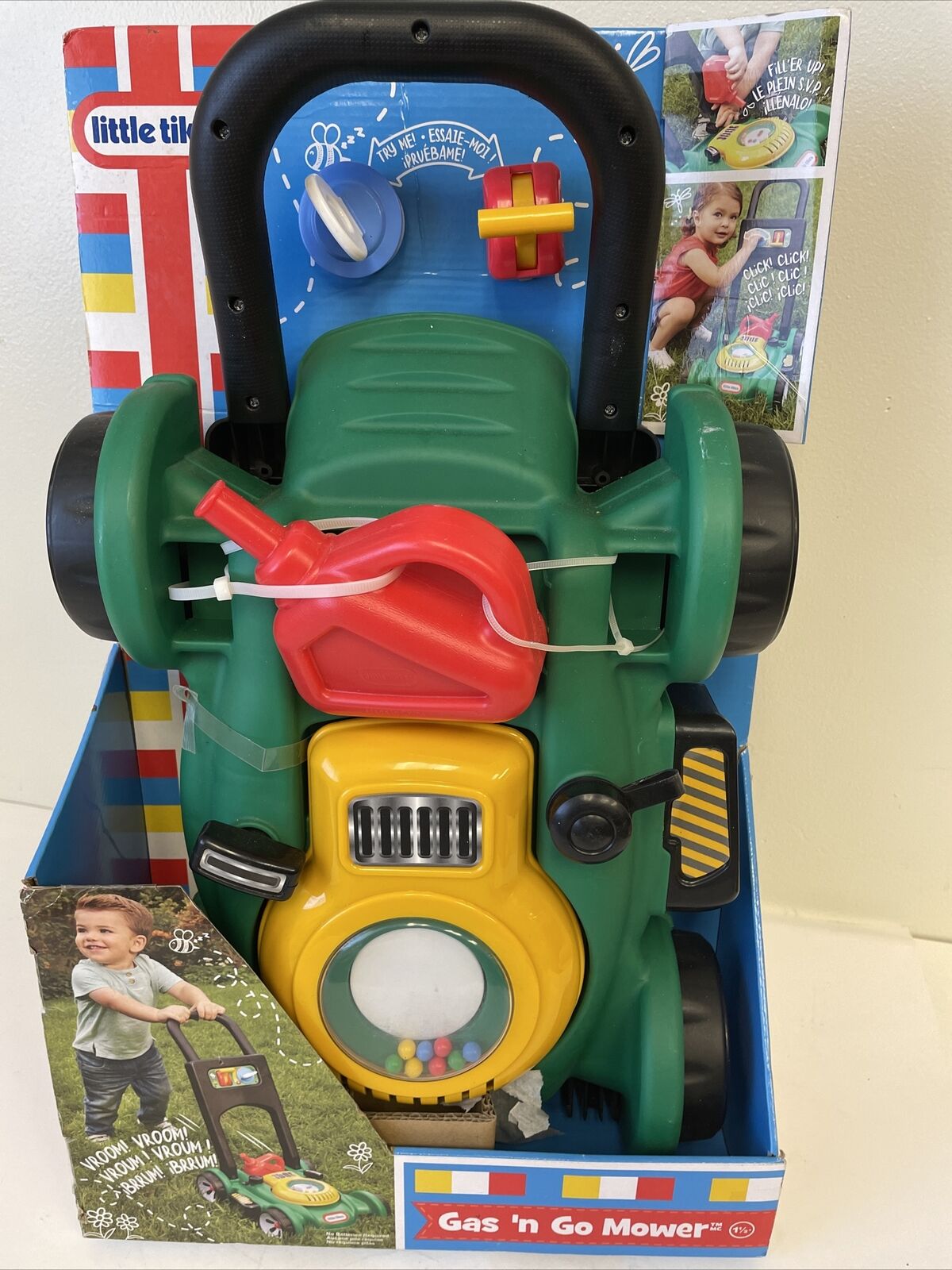
7. Customer Reviews and Testimonials
Positive customer reviews consistently highlight the Little Tikes Gas ‘n Go Mower’s engaging play value, durability, and ability to spark imaginative play. Parents appreciate the toy’s ability to keep children entertained for hours, both indoors and outdoors. Additionally, many reviews mention the toy’s sturdiness and high quality, ensuring it can withstand the wear and tear of active play.
Here’s what one satisfied customer had to say: “This Little Tikes Gas ‘n Go Mower has been a lifesaver! My toddler loves to ‘help’ me mow the lawn, and this toy keeps him entertained for ages. Then he pushes it all around the yard, making engine noises and pretending to mow. It’s so cute!
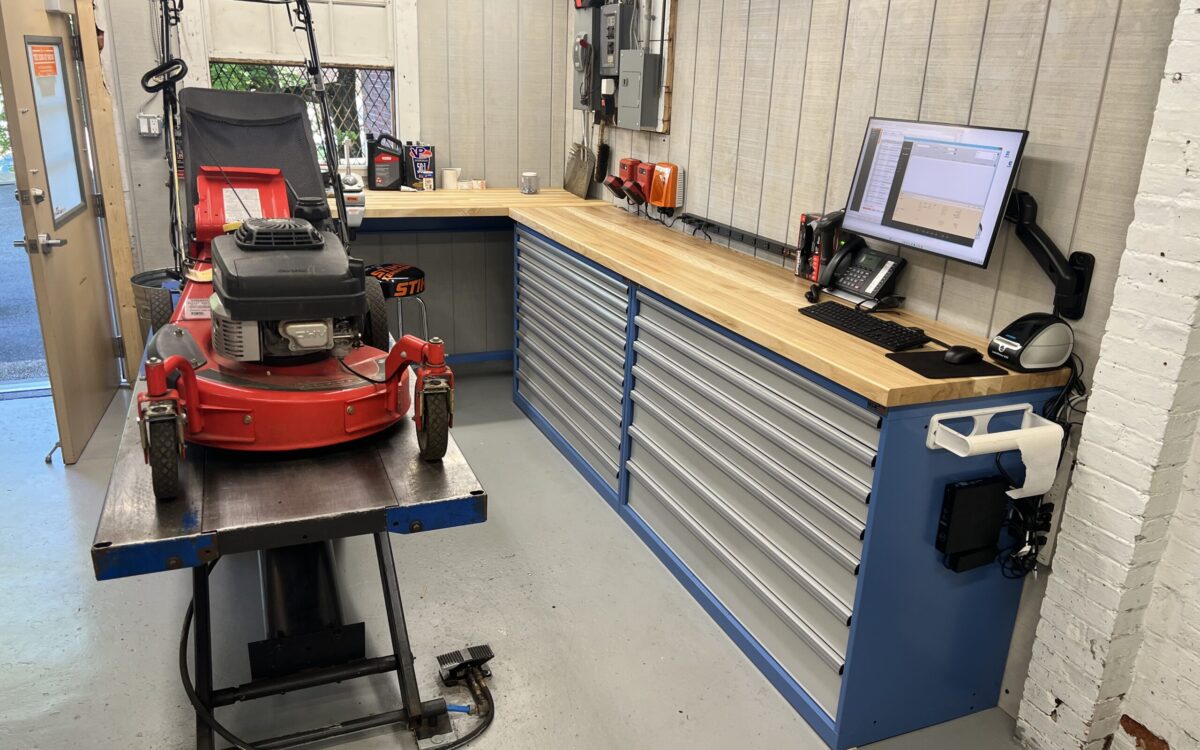
Lawn mower repair shop
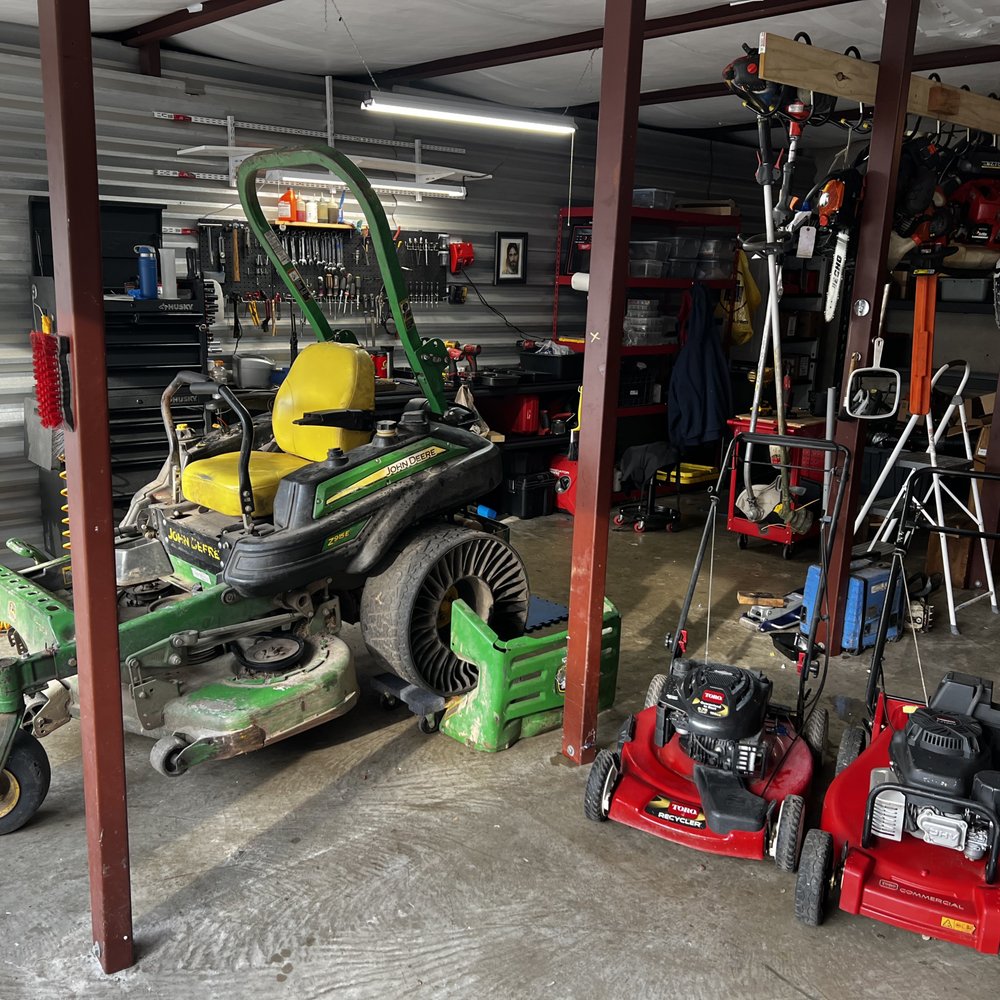
A well-maintained lawn mower is an essential tool for homeowners and lawn care enthusiasts alike. It not only keeps your lawn looking neat and tidy but also saves you time and effort. However, even the most reliable lawn mowers will eventually require some TLC. When that time comes, choosing the right lawn mower repair shop can make all the difference in ensuring your mower is back in top condition quickly and affordably.
Essential Services Offered by Lawn Mower Repair Shops
Lawn mower repair shops offer a wide range of services to keep your mower running smoothly and efficiently. These services typically include:
-
Comprehensive tune-ups and maintenance services: Regular tune-ups are crucial for preventing problems and ensuring your mower is operating at peak performance. This may involve checking and adjusting engine settings, cleaning spark plugs and air filters, changing oil, and sharpening blades.
-
Diagnosis and repair of engine issues: If your mower is experiencing problems starting, running rough, or losing power, a qualified technician can diagnose the root cause and perform the necessary repairs. This may involve replacing faulty parts, such as spark plugs, ignition coils, or fuel filters.
-
Sharpening and replacement of mower blades: Dull mower blades can make mowing more difficult and produce uneven cuts. Regular sharpening or replacement of blades ensures your mower delivers a clean, precise cut.
-
Repair and replacement of damaged parts: Over time, various parts of your lawn mower may wear out or become damaged due to normal use or accidents. Repair shops can replace belts, wheels, bearings, and other components to restore your mower’s functionality.
-
Winterization and storage services: Proper winterization can protect your lawn mower from damage during the cold months. This may involve draining oil and fuel, lubricating moving parts, and storing the mower in a clean, dry place.
Factors to Consider When Choosing a Lawn Mower Repair Shop
With numerous lawn mower repair shops available, selecting the right one can be daunting. Here are some key factors to consider:
-
Experience and expertise of the technicians: Choose a shop with experienced technicians who have a proven track record of repairing your specific lawn mower brand and model.
-
Reputation and customer reviews: Check online reviews and ask for recommendations from friends, family, or neighbors to gauge the shop’s reputation and customer satisfaction.
-
Range of services offered and availability of parts: Ensure the shop offers the services you need and has access to the necessary parts for your mower.
-
Pricing and warranty options: Compare pricing among different shops and inquire about warranty options for repairs and parts.
-
Convenience of location and operating hours: Consider the shop’s location and operating hours to ensure it’s convenient for you to drop off and pick up your mower.
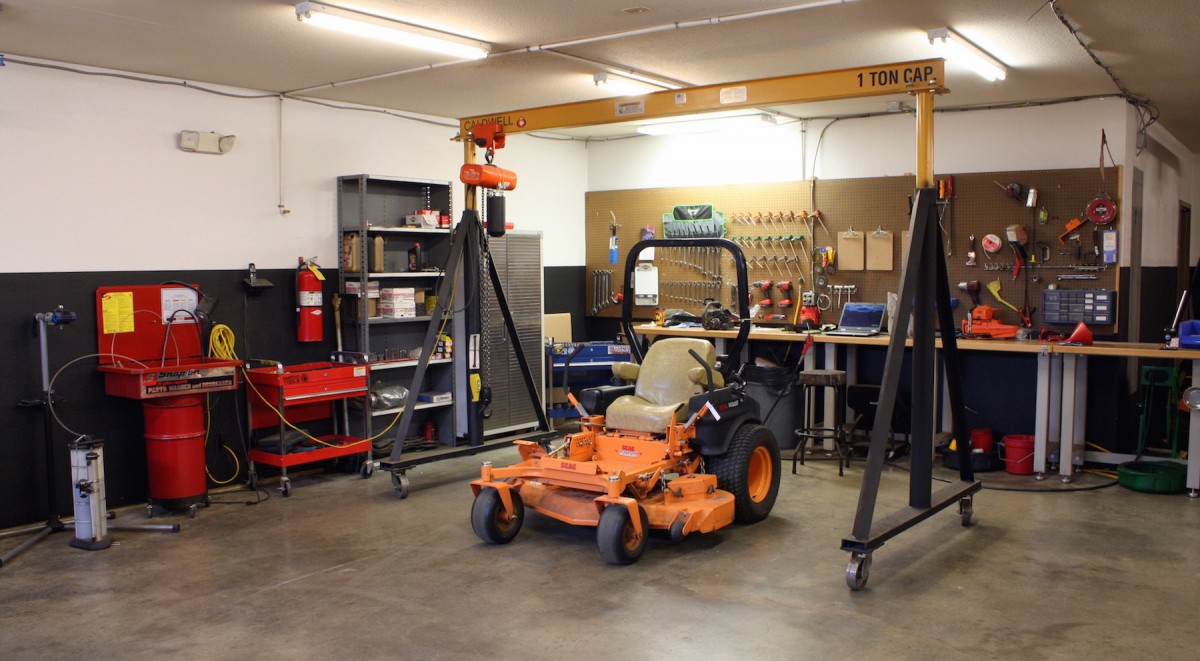
Preparing Your Lawn Mower for Repair
Before taking your lawn mower to the repair shop, take some steps to prepare it:
-
Clean the mower thoroughly and remove any debris: This will make it easier for the technician to inspect and diagnose the problem.
-
Gather any relevant information: Have the model number, serial number, and any recent maintenance records or receipts handy.
-
Describe the problem or symptoms accurately: Provide a clear and detailed description of the problem you are experiencing.
-
List any recent maintenance or repairs: Inform the technician about any recent work done on the mower.
-
Bring necessary paperwork: Keep receipts, warranties, or any other relevant paperwork with you.
Communicating with the Repair Shop
Effective communication with the repair shop is essential:
-
Clearly explain the problem or concern: Be as specific as possible about the issue you are experiencing.
-
Ask questions about the diagnosis and repair process: Don’t hesitate to ask questions to understand the problem and the proposed solution.
-
Seek clarification on warranties or guarantees: Inquire about the warranty coverage for repairs and parts.
-
Request written estimates and keep records: Obtain written estimates and keep records of all communication.
-
Maintain a professional and courteous demeanor: Treat the repair shop staff with respect and professionalism.

Choosing the Right Repair Parts
When selecting repair parts, consider these factors:
-
Consult with the repair shop: Seek their recommendations for compatible and high-quality parts.
-
Consider part quality and reputation: Choose parts from reputable manufacturers known for durability and performance.
-
Ensure part compatibility: Verify that the parts are compatible with your specific lawn mower model.
-
Compare prices from different sources: Shop around to find the best prices for the parts you need.
-
Consider warranty coverage: Opt for parts with a warranty to protect your investment.
Preventing Common Lawn Mower Problems
Regular maintenance can go a long way in preventing common lawn mower problems:
-
Follow the manufacturer’s maintenance schedule: Stick to the recommended maintenance intervals for tune-ups, oil changes, and other preventive measures.
-
-
Use high-quality gasoline and oil: Opt for fresh, high-quality gasoline and oil to ensure optimal engine performance and reduce wear and tear.
-
Keep the mower blades sharp: Regularly sharpen or replace mower blades for a clean cut and to prevent straining the engine.
-
Clean the mower regularly and remove any debris: Build-up of grass clippings and debris can hinder performance and lead to engine problems. Clean the mower after every use.
-
Store the mower properly during the off-season: When not in use, store the mower in a clean, dry place to protect it from the elements and prevent rust and corrosion.

Additional Services Offered by Some Lawn Mower Repair Shops
Some repair shops offer a wider range of services beyond basic repairs:
-
Lawn mower sales and rentals: If you need a new mower or a temporary solution, some shops offer sales and rentals.
-
Accessory sales and installation: You can find accessories like mulching kits, baggers, and headlights at some repair shops, with installation services available.
-
Lawn care and landscaping services: Certain shops may offer additional services like lawn care and landscaping.
-
Delivery and pick-up services: Some shops offer convenient pick-up and delivery services for your mower repairs.
-
Emergency repair services: While less common, some repair shops may offer emergency repair services for urgent mower problems.
The Importance of Regular Maintenance
Investing in regular maintenance is crucial for several reasons:
-
Prolongs the lifespan of your lawn mower: Proper care extends the life of your mower, saving you money on replacing it prematurely.
-
Ensures optimal performance and efficiency: Regular maintenance keeps your mower running smoothly and efficiently, leading to a better mowing experience.
-
Prevents costly repairs in the future: Addressing minor issues through maintenance can prevent major breakdowns and expensive repairs down the road.
-
Maintains the safety of the mower operator: A well-maintained mower operates safely and reduces the risk of accidents due to malfunctioning parts.
-
Contributes to a healthier and more enjoyable lawn care experience: A properly running mower makes lawn care easier and more enjoyable, allowing you to achieve a healthier, more aesthetically pleasing lawn.

Conclusion: Keeping Your Lawn Mower Running Smoothly
A well-maintained lawn mower is an essential tool for a beautiful lawn. By choosing the right lawn mower repair shop, following preventive maintenance practices, and communicating effectively with the repair technicians, you can ensure your lawn mower runs smoothly and efficiently for years to come. Remember, regular tune-ups and repairs are an investment that will pay off in the long run, keeping your lawn looking its best and saving you time and money.
Additional Tips for Maintaining Your Lawn Mower:
-
Consult the owner’s manual for specific instructions: Each mower model may have slight variations in maintenance procedures. Refer to the owner’s manual for specific instructions and recommendations.
-
Use the right tools for the job: When performing maintenance tasks, use appropriate tools for the job to avoid damaging components.
-
Handle delicate parts with care: Be gentle when handling delicate parts like spark plugs and air filters to prevent accidental damage.
-
Clean up spills and debris promptly: Clean up any spilled gasoline, oil, or debris immediately to prevent corrosion and damage.
-
Store the mower in a safe and dry place: A clean, dry storage space protects your mower from the elements and helps ensure it’s ready for use when you need it.
By following these tips and taking advantage of the resources offered by lawn mower repair shops, you can keep your lawn mower running smoothly and efficiently for many seasons to come.
-
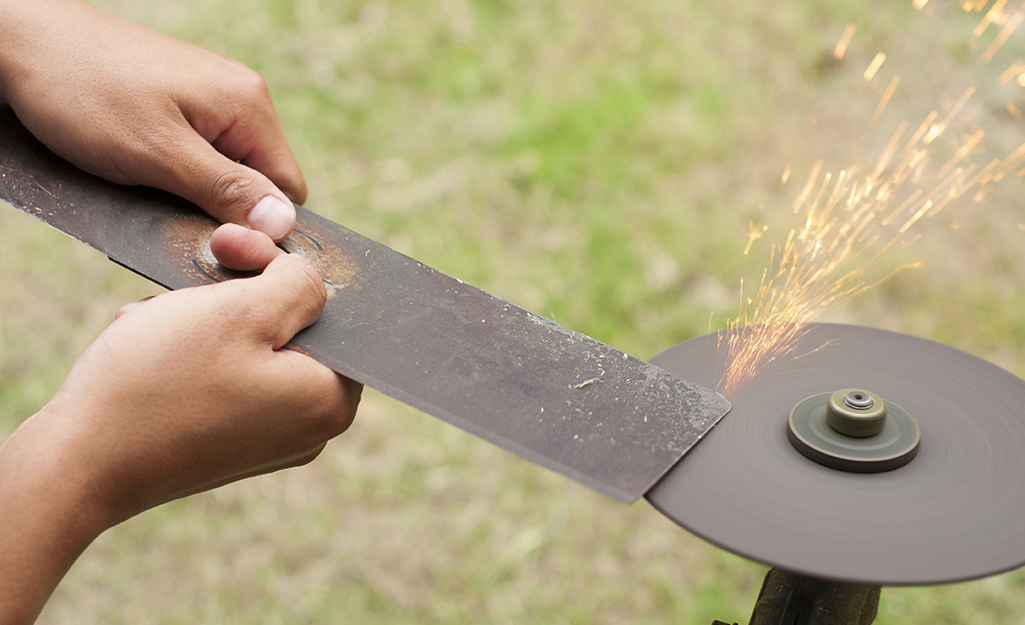
How to sharpen lawn mower blade
In the realm of lawn care, a sharp lawn mower blade is not just a luxury but a necessity. A dull blade can wreak havoc on your lawn, leaving behind an uneven, unsightly mess and potentially harming the grass itself. On the other hand, a well-sharpened blade glides through the grass with precision, creating a clean, healthy cut that promotes lush growth and a beautiful lawn appearance.
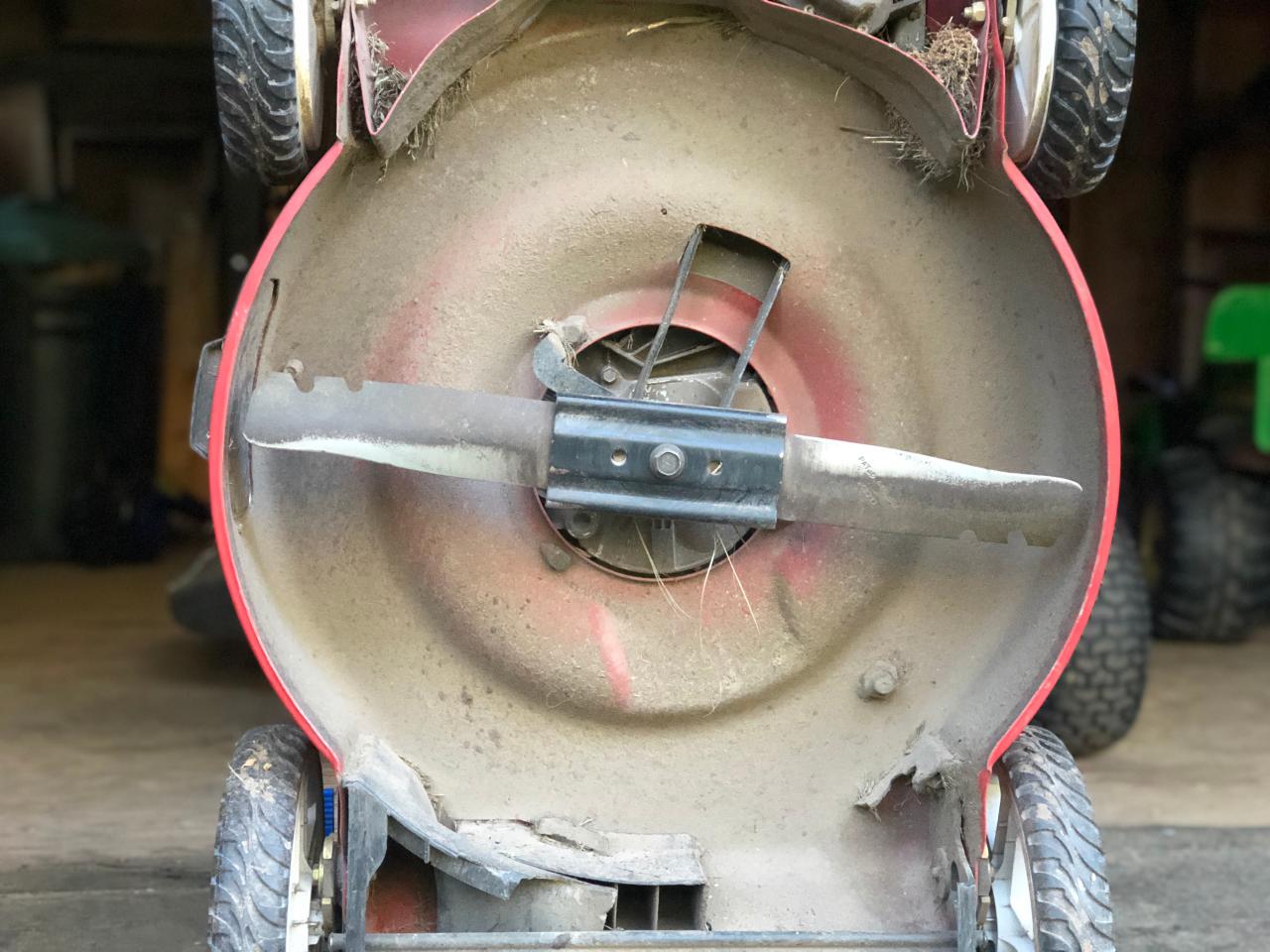
Understanding the Importance of Sharp Lawn Mower Blades
The consequences of a dull lawn mower blade extend far beyond mere aesthetics. A dull blade struggles to cut through the grass cleanly, resulting in torn and ragged grass blades. This damage weakens the grass, making it more susceptible to diseases, pests, and environmental stressors. Additionally, mowing with a dull blade requires more effort, making the task more time-consuming and physically demanding.
In contrast, a sharp lawn mower blade delivers a clean, precise cut that mimics the natural shearing action of a scissor. This clean cut minimizes damage to the grass blades, allowing them to heal quickly and promoting healthy growth. A sharp blade also reduces mowing effort, making the task more efficient and enjoyable.
Essential Tools and Safety Precautions
Before embarking on the task of sharpening your lawn mower blade, it’s crucial to gather the necessary tools and prioritize safety. Safety glasses and work gloves are essential to protect your eyes from flying debris and your hands from sharp edges. A vise or workbench clamp is essential for securely holding the blade in place during sharpening, preventing it from slipping or causing injury.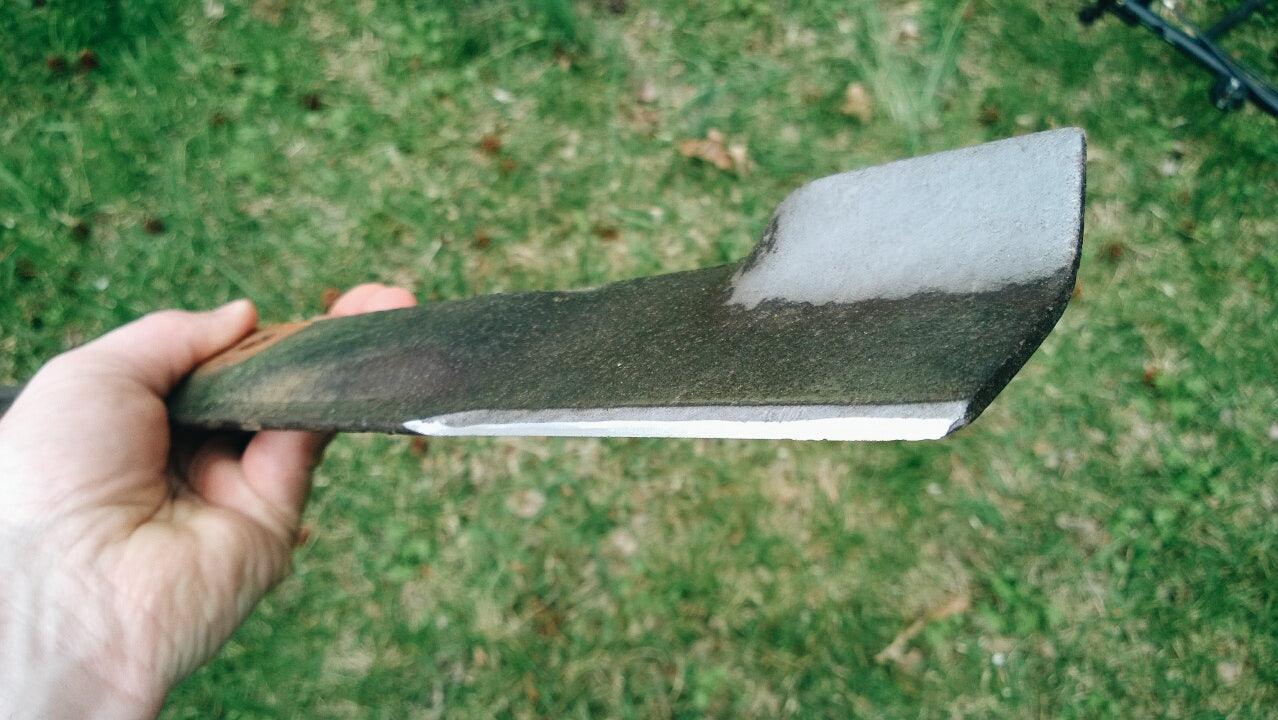
Step-by-Step Guide to Sharpening Lawn Mower Blades
-
Blade Preparation:
a. Removal: Disconnect the spark plug wire and carefully remove the blade from the lawn mower. b. Cleaning: Remove any dirt, grass clippings, or debris from the blade using a wire brush or solvent. c. Inspection: Check for cracks, damage, or excessive wear. If severely damaged, the blade may need replacement.
-
Sharpening Process:
a. Securing the Blade: Clamp the blade firmly in a vise or workbench clamp. b. Identifying the Sharpening Angle: Determine the correct angle for sharpening, typically around 30-45 degrees. c. Sharpening: Use a metal file with appropriate grit size to sharpen the blade along its cutting edge, maintaining the correct angle. d. Maintaining Even Sharpening: Sharpen each side of the blade evenly to ensure a balanced and consistent cut.
-
Finishing Touches:
a. Sharpness Check: Use a light touch to test the sharpness of the blade along its cutting edge. b. Burr Removal: Smooth out any burrs or rough edges created during sharpening using a fine-grit file or sharpening stone. c. Final Cleaning and Inspection: Clean the blade again to remove any metal filings and inspect it for any irregularities.

Additional Tips and Considerations
- Sharpening Frequency: Sharpen the lawn mower blade after 20-30 hours of use or once a season.
- Professional Sharpening Services: For those uncomfortable or inexperienced with sharpening, consider professional lawn mower blade sharpening services.
- Blade Replacement: If the blade is excessively worn, cracked, or damaged beyond repair, it should be replaced.
Maintaining a Sharp Blade for Optimal Performance
Even the sharpest blade loses its edge over time, especially when encountering tough grass varieties, abrasive soil, or hidden obstacles like rocks or roots. Here are some tips to maintain a sharp blade for optimal performance:
- Mowing Techniques: Employ proper mowing techniques to minimize blade wear. Avoid mowing on excessively dry or wet grass, as both extremes can dull the blade faster. Mow at the recommended height for your grass type to prevent unnecessary strain on the blade.
- Debris Removal: After each mowing session, remove any accumulated grass clippings, dirt, or debris from the underside of the mower deck and blade. This prevents the buildup of corrosive materials that can dull the blade.
- Storage Tips: Store your lawn mower in a clean, dry location to prevent rust, which can weaken the blade and hinder its cutting performance. Consider lightly applying a thin coat of oil to the blade before storage for added protection.

Troubleshooting Common Sharpening Issues
Sharpening your lawn mower blade may not always go perfectly, especially for first-timers. Here are some common issues and solutions to ensure a successful sharpening experience:
- Uneven Sharpening: If you notice one side of the blade is sharper than the other, it likely indicates uneven pressure or angle during sharpening. Go back and refine the duller side, maintaining the correct angle and consistent pressure.
- Excessive Material Removal: Be mindful not to remove too much material from the blade. Sharpening removes a small amount of metal to restore the edge. Over-sharpening can weaken the blade and shorten its lifespan.
- Blade Vibration: A vibrating blade during operation can indicate an unbalanced blade. This may occur due to uneven sharpening or pre-existing damage. Ensure both sides are sharpened evenly and check for any bends or warping in the blade. If necessary, a professional can help rebalance the blade.
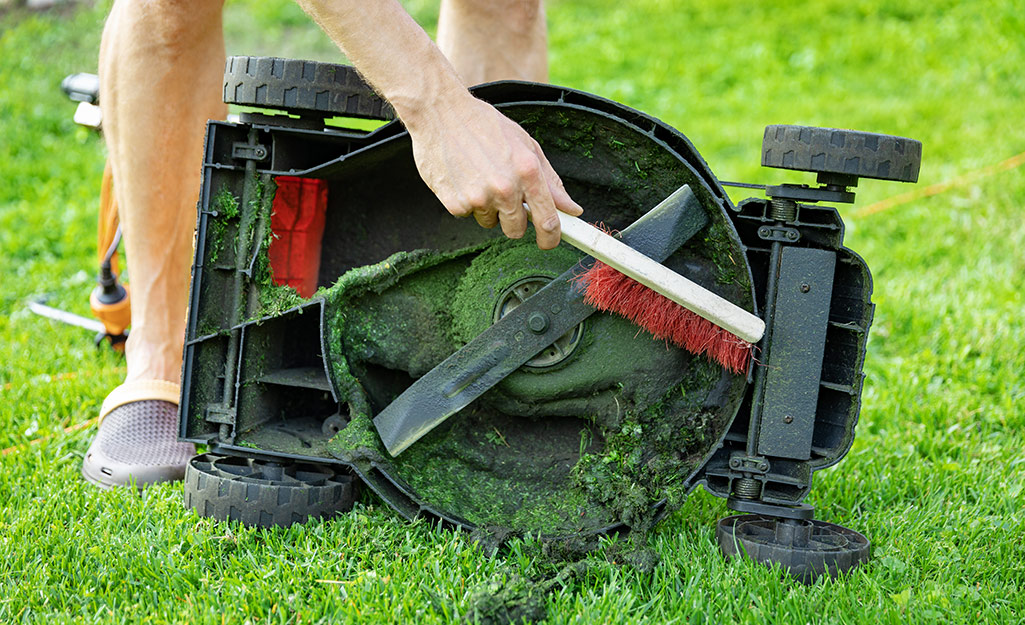
Beyond Sharpening: Alternative Solutions for Lawn Mower Blades
While sharpening is a cost-effective way to maintain your lawn mower blade, there are situations where alternative solutions may be necessary:
- Severely Damaged Blades: If the blade is excessively worn, cracked, or bent beyond repair, sharpening won’t restore its functionality. In such cases, replacing the blade with a new one is the best course of action.
- Lack of Confidence or Time: Sharpening requires some practice and can be time-consuming. If you’re uncomfortable with the process or lack the time, consider professional lawn mower blade sharpening services. They offer a convenient and reliable way to ensure your blade is properly sharpened and maintained.
By understanding the importance of a sharp blade, following proper sharpening techniques, and implementing maintenance practices, you can extend the lifespan of your blade and ensure your lawn mower operates at peak performance. Remember, a sharp blade is an investment in the health and beauty of your lawn, making your mowing experience more efficient and enjoyable.
Conclusion
Regular sharpening of your lawn mower blade is an essential part of proper lawn care. A sharp blade not only enhances the appearance of your lawn but also promotes healthy grass growth, reduces mowing effort, and extends the lifespan of your mower. By following these guidelines and taking the necessary safety precautions, you can sharpen your lawn mower blade with confidence, ensuring your lawn stays looking its best throughout the season. Remember, a sharp blade is a happy blade – and a happy blade means a happy lawn.

Where can i rent a lawn mower for a day
In the realm of homeownership and yard maintenance, the task of mowing the lawn often ranks high on the to-do list. While some homeowners proudly own their own lawn mowers, others find that renting a mower for a day is a more practical and cost-effective solution. Whether you’re tackling an occasional lawn care project, trying out a new mower model, or simply don’t have the space or budget for a personal mower, renting offers a convenient and flexible alternative.
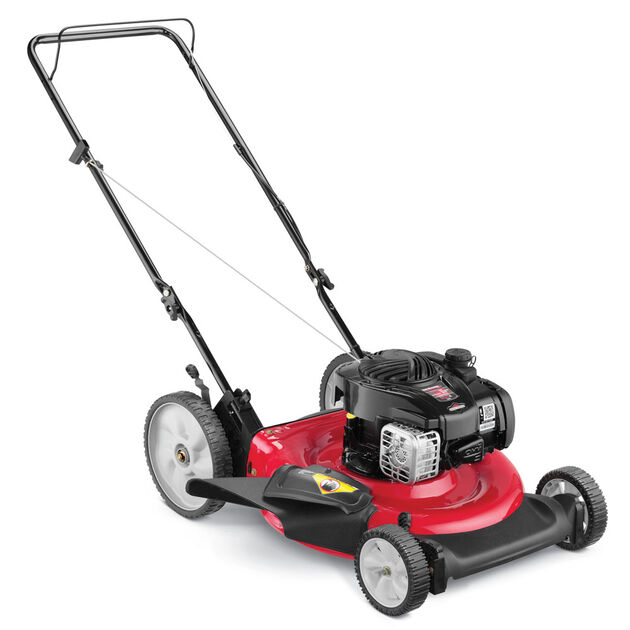
Understanding the Reasons for Renting a Lawn Mower
The decision to rent a lawn mower often stems from specific circumstances or preferences that make owning a mower less appealing. For instance, individuals with small lawns or infrequent mowing needs may find renting more economical than purchasing and maintaining a mower they use sparingly. Additionally, those tackling one-time landscaping projects or experimenting with different mower types may benefit from the flexibility and variety offered by rental services.
Renting a lawn mower presents several advantages over owning one. Firstly, it eliminates the upfront cost of purchasing a mower, which can range from affordable models to high-end machines. Rental fees, on the other hand, are typically based on the duration of use, making them a more budget-friendly option for occasional or short-term needs.
Secondly, renting offers flexibility in terms of mower selection. Rental centers and online platforms often provide a diverse range of mowers, from basic push mowers to powerful riding mowers or specialized mowers designed for specific tasks. This variety allows individuals to choose the mower that best suits their lawn size, terrain, and personal preferences.
Exploring the Diverse Options for Lawn Mower Rentals
When seeking a lawn mower rental, it’s essential to explore the various options available to ensure you find the best fit for your needs and budget. Traditional rental centers, such as hardware stores or home improvement centers, are a convenient and well-known source for lawn mower rentals. These centers typically offer a variety of mower models, often accompanied by expert advice from knowledgeable staff.
For those seeking a wider selection or potentially lower rental fees, online rental platforms like Craigslist or Airbnb offer peer-to-peer lawn mower rentals. These platforms provide access to a broader range of mowers, often from individual owners, and may offer more competitive pricing. However, it’s crucial to conduct thorough research and exercise caution when renting through online platforms to avoid scams or unreliable rentals.
Specialized lawn mower rental companies cater specifically to lawn care needs and often offer a wider range of equipment compared to traditional rental centers or online platforms. These companies may provide access to specialized mowers designed for commercial landscaping or unique terrain, along with expert advice, delivery, and pickup services. While these services may be more expensive, they offer convenience and access to specialized equipment.
Factors to Consider When Choosing a Lawn Mower Rental
To ensure a successful lawn mower rental experience, it’s essential to carefully consider several factors before making a decision. The type of lawn mower is a crucial consideration, as different models are designed for specific tasks and lawn sizes. Push mowers are suitable for small to medium-sized lawns and require manual operation, while riding mowers are more efficient for larger lawns and offer a comfortable riding experience. Self-propelled mowers provide easier maneuverability on slopes or uneven terrain.
Lawn size and terrain also play a significant role in mower selection. The size of the lawn determines the appropriate mower capacity, while the terrain dictates the need for specific features, such as self-propulsion for slopes or enhanced traction for uneven surfaces.
Rental duration and pricing are additional factors to consider. Determine the rental period based on the lawn care task and your personal schedule. Compare rental fees from different providers to find the most cost-effective option, considering factors like daily rates, weekly rates, and potential discounts for longer rental periods.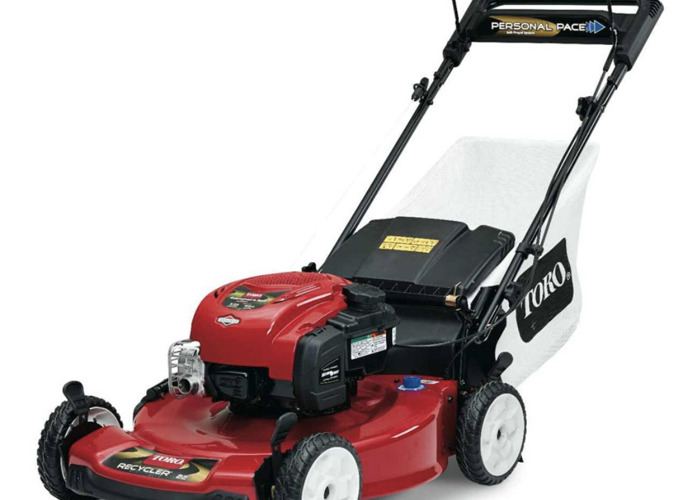
Additional Tips for a Successful Lawn Mower Rental Experience
To ensure a smooth and safe lawn mower rental experience, follow these additional tips:
-
Thorough Inspection: Before leaving the rental premises, thoroughly inspect the mower for any damage, malfunctions, or missing parts. Ensure it is equipped with the necessary accessories, such as blades, fuel, and safety features.
-
Rental Terms and Conditions: Carefully review the rental agreement to understand your responsibilities, insurance coverage, and return policies. Clarify any questions or concerns with the rental provider before proceeding.
-
Safe Operation: Prior to operating the mower, read the instruction manual and familiarize yourself with the controls and safety features. Wear appropriate safety gear, including gloves, eye protection, and hearing protection. Operate the mower in a safe manner, avoiding hazards and respecting neighbors.

-
Part 7: Maintaining a Rented Lawn Mower During Use**
While most rental mowers are well-maintained by the providers, basic upkeep during your rental period ensures optimal performance and prevents potential damage. Here are some key points to remember:
- Fuel Management: Check the fuel level before starting the mower and refuel as needed, using the appropriate fuel type as specified in the user manual.
- Blade Inspection: Periodically inspect the mower blades for any signs of dullness, nicks, or damage. Replace dull or damaged blades for a clean and efficient cut.
- Grass Clipping Management: Empty the grass catcher regularly to prevent accumulation and ensure proper airflow. Leaving grass clippings in the catcher can restrict airflow and lead to uneven cutting or engine overheating.
- General Cleaning: After each use, take a few minutes to clean the mower. Remove any grass clippings or debris from the undercarriage and blades. Wipe down the exterior of the mower to remove dirt and dust.
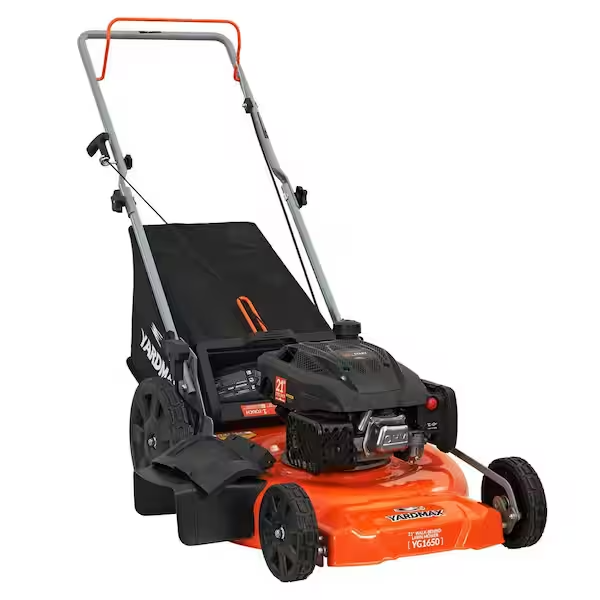
Part 8: Returning the Rented Lawn Mower
Returning the rented lawn mower in a clean and undamaged condition ensures a smooth and hassle-free experience. Here’s what to do:
- Final Inspection: Perform a final inspection of the mower for any damage incurred during use. Report any damage immediately to the rental provider.
- Refueling (if applicable): Check the rental agreement to see if returning the mower with a full fuel tank is required. If so, refuel the mower before returning it.
- Cleaning: Clean the mower again, as mentioned in the previous section, to ensure it’s returned in a presentable condition.
- Paperwork: Review and sign any necessary paperwork upon returning the mower.
Part 9: Beyond Renting: Alternative Lawn Mower Solutions
While renting is a convenient option, other solutions exist for those seeking to manage their lawn without owning a mower. Here are some alternative approaches:
- Lawn Care Services: Hiring a professional lawn care service takes the responsibility of mowing and yard maintenance off your plate.
- Co-ownership: Consider splitting the cost and responsibility of owning a mower with a neighbor or friend with similar lawn care needs.
- Borrowing: If a friend or family member owns a lawn mower, see if you can borrow it for your project with their permission.

Conclusion
By following these tips and information, you can navigate the world of lawn mower rentals with confidence. Renting a mower provides a flexible and cost-effective solution for various lawn care scenarios. Remember to choose the right mower for your needs, practice safe operation, and return the mower in good condition. Whether you choose to rent, hire a service, or explore alternative options, maintaining a healthy, well-groomed lawn becomes an achievable task, allowing you to enjoy the beauty and serenity of a lush outdoor space.

What were chainsaws originally made for
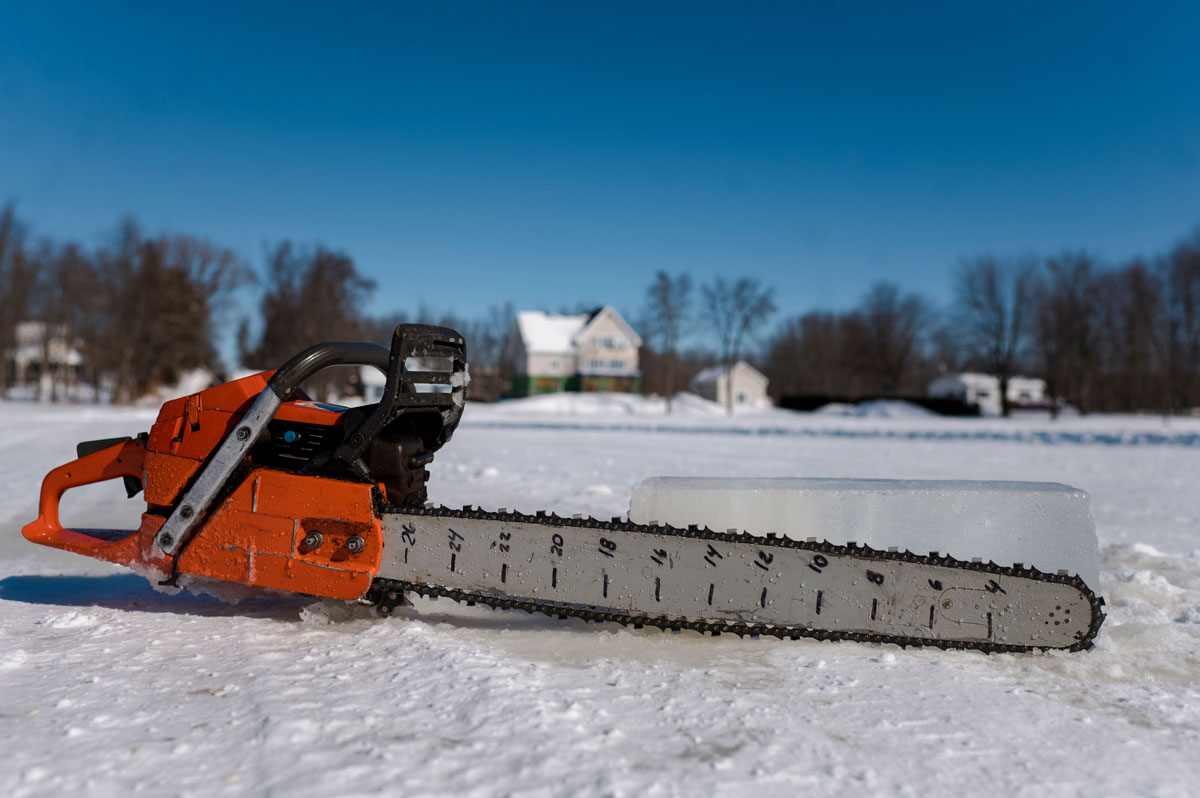
The chainsaw, a tool that evokes images of lumberjacks, construction workers, and even horror movie villains, has a surprisingly rich and unexpected history. Its journey from medical origins to its current status as an indispensable tool in various industries is a testament to human ingenuity and the power of technology to transform our world.
From Surgical Precision to Timber Industry Might
The chainsaw’s origins can be traced back to the late 18th century in Scotland, where two doctors, John Aitken and James Jeffray, envisioned a device that could revolutionize childbirth procedures. Their creation, a hand-powered chainsaw with a serrated chain, was intended to aid in symphysiotomy, a surgical procedure to widen the pelvic canal during childbirth. While the Aitken-Jeffray chainsaw marked an early step in medical innovation, its use was not without controversy, raising ethical concerns about the potential harm to mothers and infants.
Despite the ethical debate surrounding its medical applications, the chainsaw’s potential found a new home in the timber industry. In the early 20th century, inventors like James Shand, Andreas Stihl, and Emil Lerp began developing portable chainsaws powered by electricity and gasoline. These advancements transformed the logging industry, dramatically increasing efficiency and safety compared to traditional manual methods. The introduction of chainsaws into forestry marked a turning point, allowing for faster and more controlled tree felling and timber harvesting.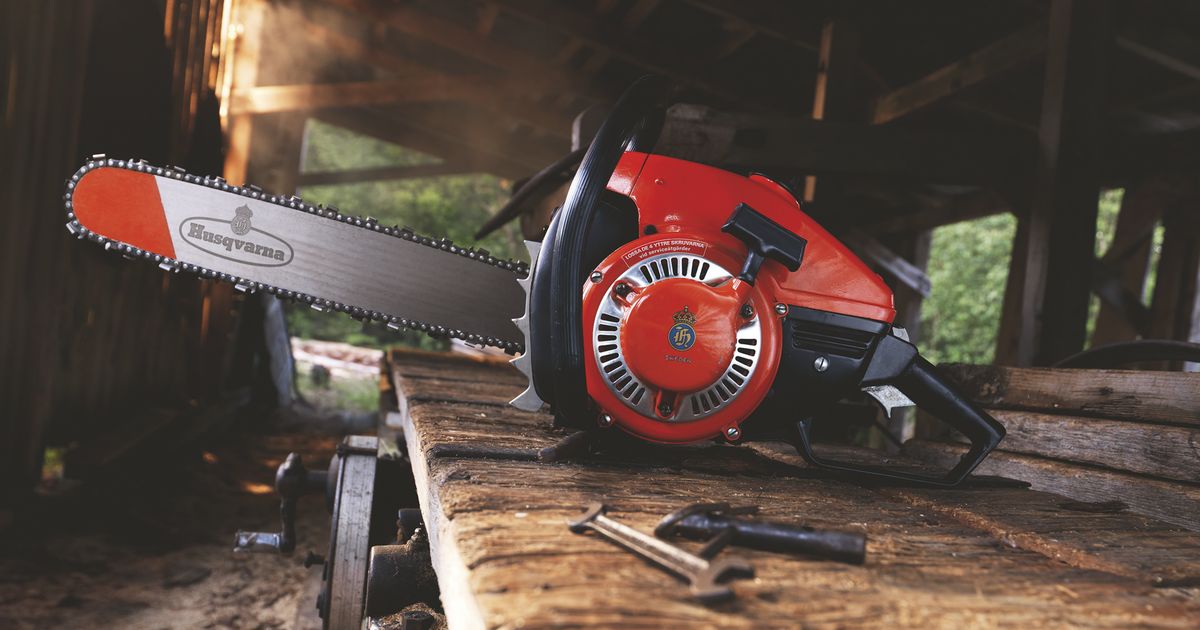
World War II, American Ingenuity, and Post-War Advancements
The outbreak of World War II disrupted the supply of German-made chainsaws to North America, creating an opportunity for American manufacturers to step in. Companies like McCulloch and Poulan emerged, further refining chainsaw technology and introducing gasoline-powered models that offered greater power and portability. These advancements propelled the chainsaw into widespread use, not only in forestry but also in construction, landscaping, and even rescue operations.
The post-war era saw continued advancements in chainsaw design and performance. Engineers focused on improving engine efficiency, reducing weight, and enhancing safety features. Chainsaws became more specialized, with models tailored for specific tasks like tree felling, limbing, and carving. The development of safety standards and regulations, along with the emphasis on proper training and protective gear, helped minimize accidents and promote safe chainsaw operation.
Environmental Considerations and Cultural Significance
The widespread use of chainsaws raised concerns about their environmental impact on forests and ecosystems. Sustainable forestry practices and the responsible use of chainsaws became crucial in balancing the tool’s benefits with environmental protection. The development of environmentally friendly chainsaw technologies, such as low-emission engines and noise reduction features, further addressed these concerns.
Beyond its practical applications, the chainsaw has also gained cultural significance. Its image of power, masculinity, and danger has been captured in popular culture, from horror movies like “The Texas Chain Saw Massacre” to video games like “Dead Rising.” The chainsaw has evolved from a medical tool to a cultural icon, symbolizing both the destructive potential and the transformative power of human innovation.
A Symbol of Transformation and Enduring Utility
The chainsaw’s journey from medical origins to modern-day applications is a remarkable tale of human ingenuity and the transformative power of technology. From its humble beginnings as a surgical tool to its current status as an indispensable industry staple, the chainsaw has revolutionized various fields and left an indelible mark on our world. As we look towards the future, it is likely that chainsaws will continue to evolve, adapting to new challenges and finding innovative applications, solidifying their place as a symbol of human progress and adaptability.
An Unexpected Beginning: The Chainsaw’s Medical Origins
The concept of a chainsaw for medical use might seem strange today. However, in the late 18th century, Scottish doctors John Aitken and James Jeffray envisioned a tool to improve childbirth outcomes. Their design, a hand-cranked chainsaw with a serrated blade, aimed to facilitate a procedure called symphysiotomy. This procedure involved widening the birth canal by severing the pubic symphysis, the joint connecting the pelvic bones. While the Aitken-Jeffray chainsaw represented an innovative attempt to address difficult deliveries, its use sparked ethical concerns. The potential for causing harm to mothers and infants during childbirth led to a decline in its application.
From Medical Marvel to Industrial Might: The Chainsaw’s Transformation
Despite the challenges faced in the medical field, the chainsaw’s potential found fertile ground in the timber industry. The early 20th century saw inventors like James Shand, Andreas Stihl, and Emil Lerp revolutionize the logging industry by developing portable, power-driven chainsaws. These early models, powered by electricity or gasoline, offered a significant advantage over traditional manual methods. They not only increased efficiency by allowing for faster tree felling and timber harvesting, but also improved safety for loggers who previously relied solely on axes and saws. The introduction of chainsaws into forestry marked a turning point, forever changing how humans interacted with and managed their natural resources.
Beyond Lumberjacks: The Diverse Applications of Chainsaws
The image of a burly lumberjack wielding a chainsaw in the forest is a powerful one, but the tool’s applications extend far beyond the logging industry. Chainsaws play a crucial role in disaster relief and emergency response. First responders rely on them to clear debris after storms, earthquakes, and other natural disasters, creating access routes and rescuing individuals trapped under fallen trees or collapsed structures. Furthermore, specialized chainsaws have found their place in artistic expression. Sculptors and artists utilize the power and versatility of chainsaws to create impressive and intricate wooden sculptures, showcasing a surprising artistic side to this often-industrial tool.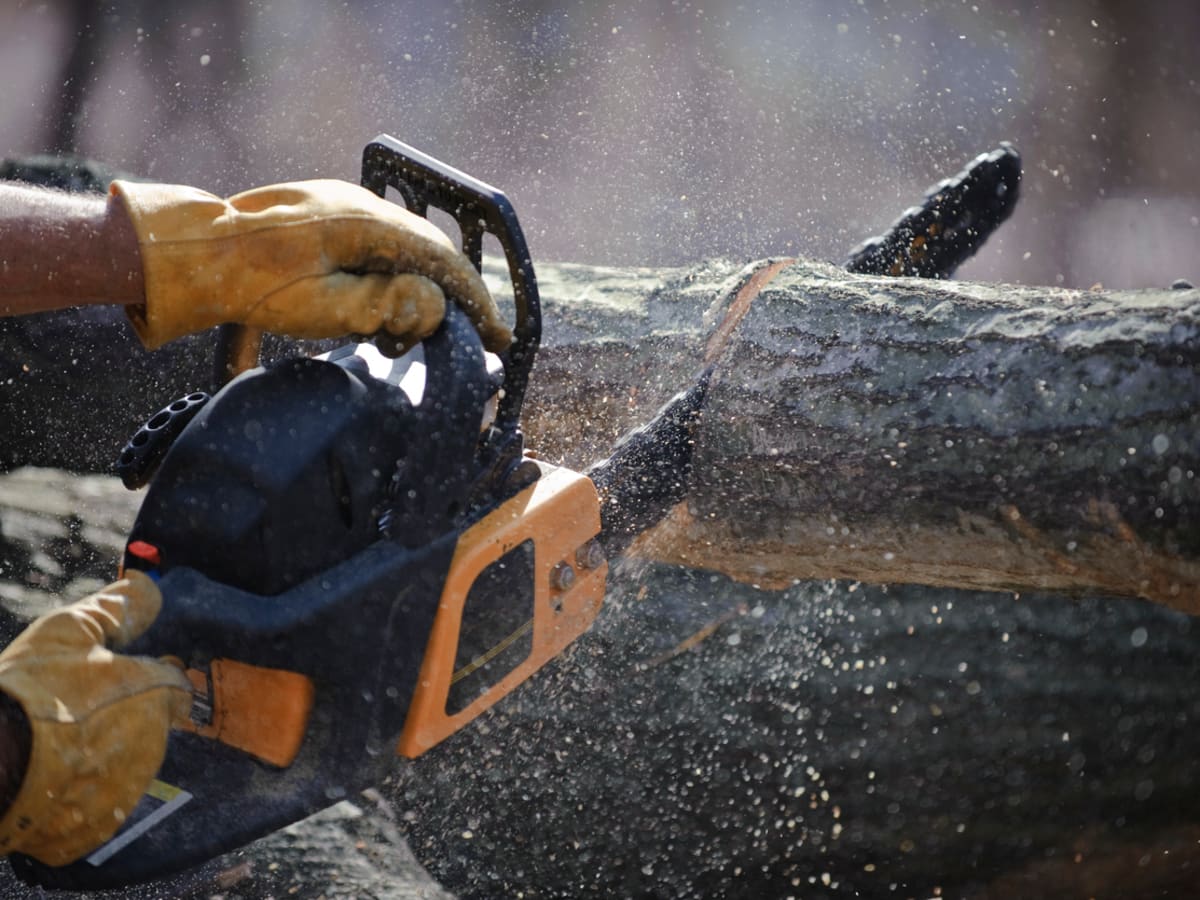
A Legacy of Innovation: The Evolution of Chainsaw Design
The chainsaw’s design has undergone a remarkable transformation, reflecting advancements in technology and changing demands over the years. The earliest models, like the Aitken-Jeffray chainsaw, were entirely manual, requiring significant effort to operate. The introduction of electric and gasoline engines in the early 20th century revolutionized chainsaw use, offering greater power and portability. However, these early models were often bulky and heavy, sometimes requiring two operators for tasks demanding greater power.
The post-war era witnessed a shift towards lighter, more user-friendly designs. Engineers focused on ergonomics, incorporating features like vibration reduction and improved handle placement to enhance comfort and control. Modern chainsaws are marvels of engineering, boasting powerful engines, automatic chain lubrication systems, and safety features like chain brakes and kickback protection. This evolution reflects a commitment to making chainsaws not only more powerful but also safer and easier to operate.
Furthermore, the development of specialized chainsaws caters to specific tasks within various industries. Forestry professionals utilize heavy-duty chainsaws designed for felling large trees, while arborists employ lighter models for pruning and branch removal. Specialized carving chainsaws with smaller blades and finer cutting teeth offer artists greater precision and control for creating intricate sculptures. This continuous innovation in chainsaw design ensures the tool remains relevant and adaptable to evolving needs across diverse applications.